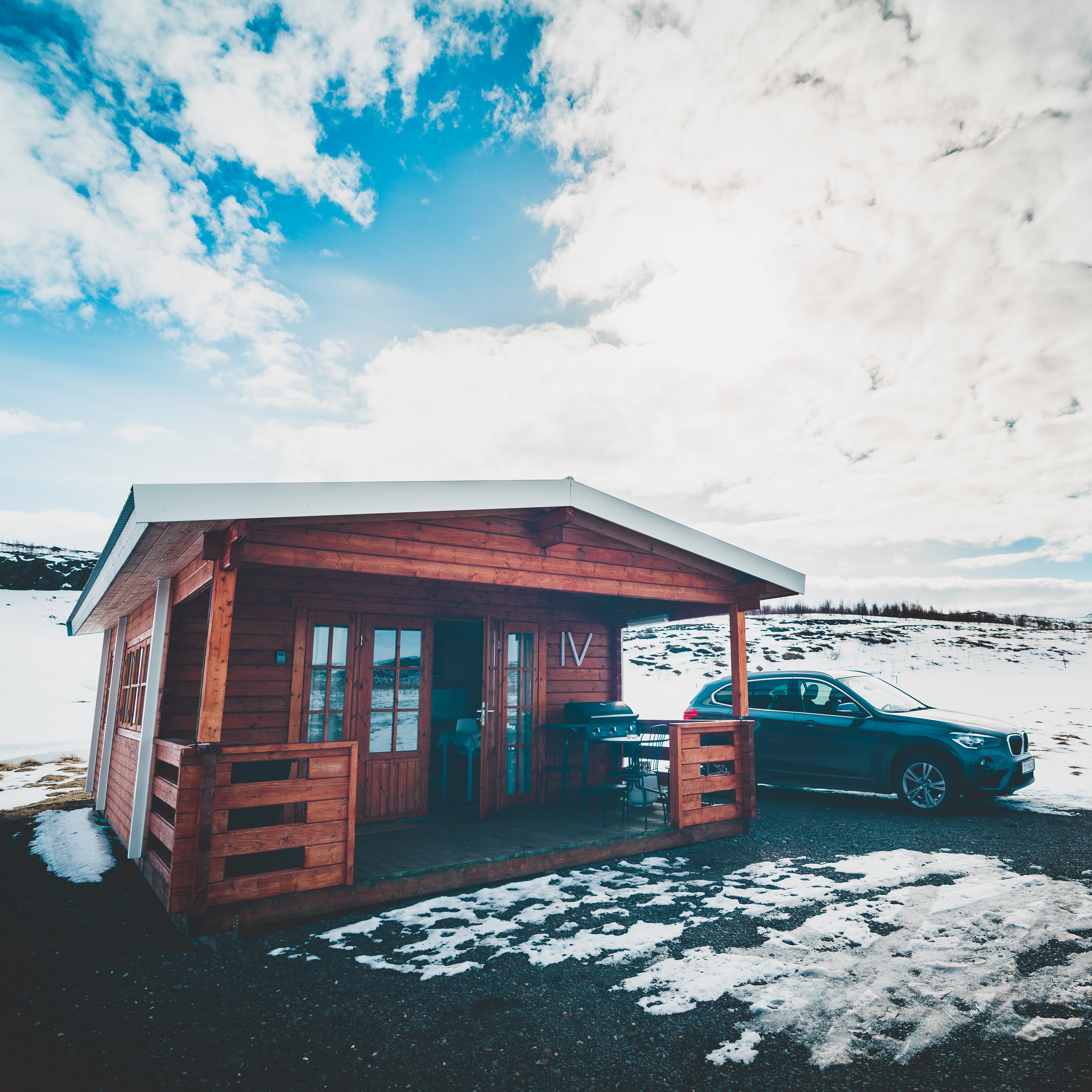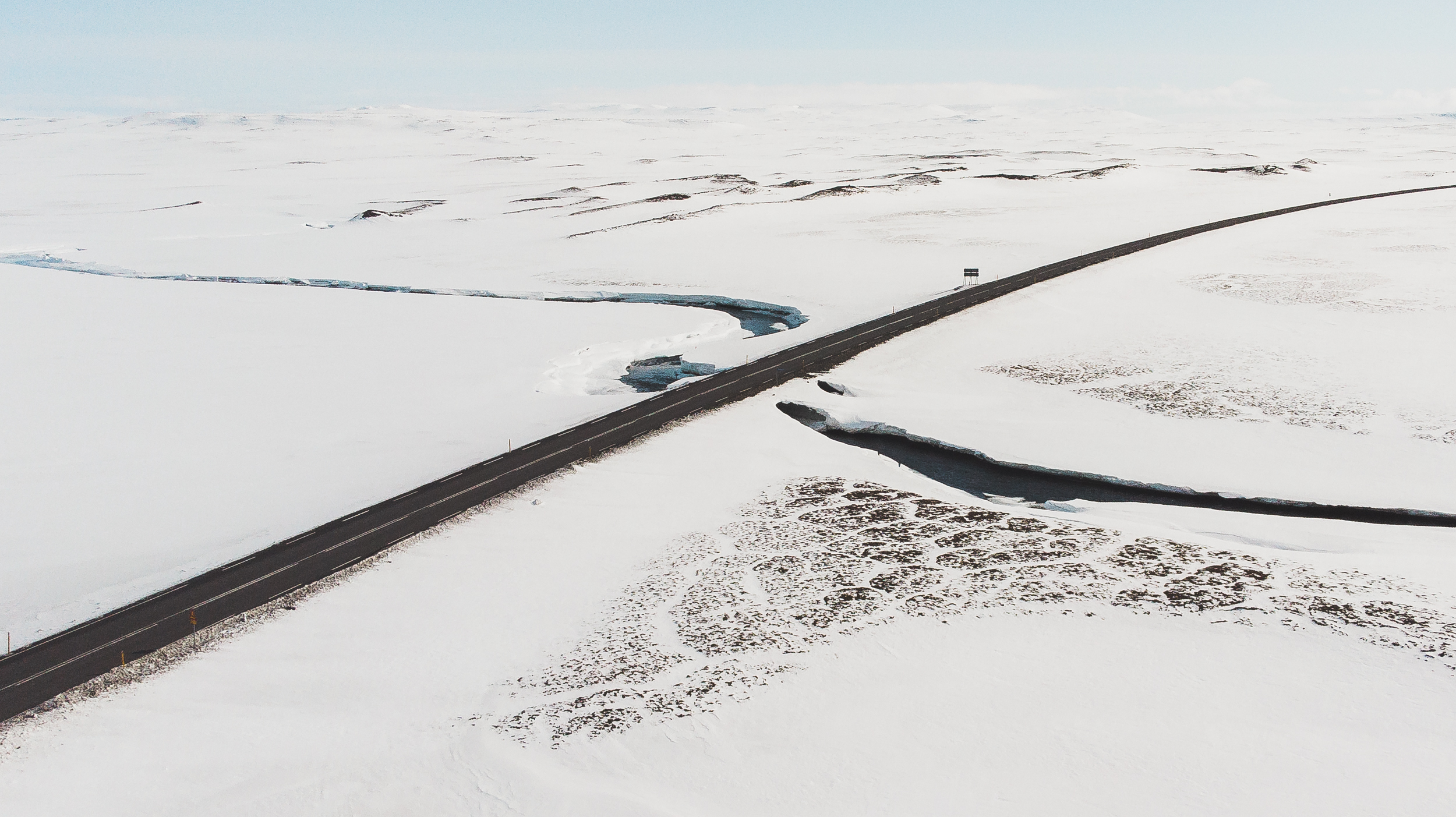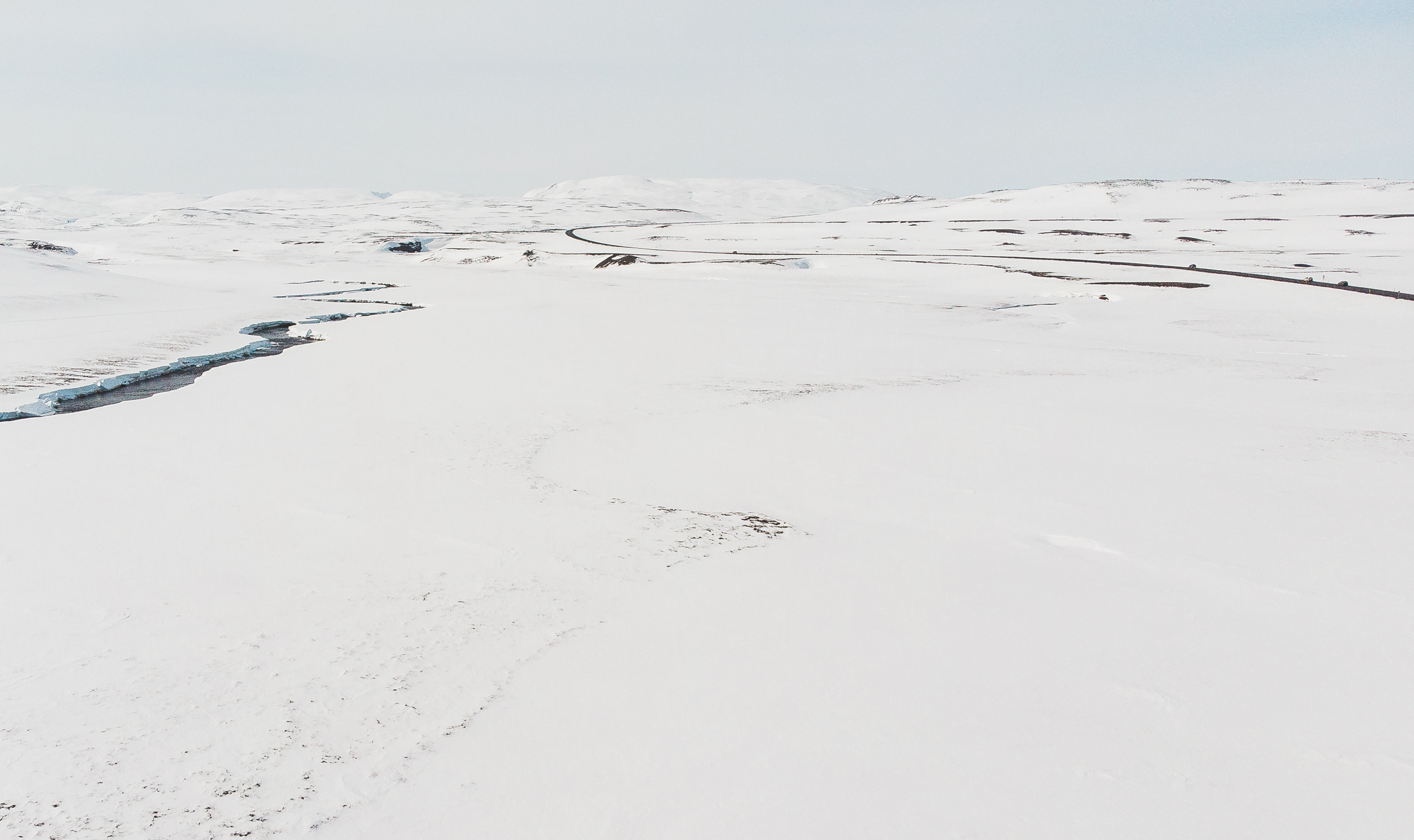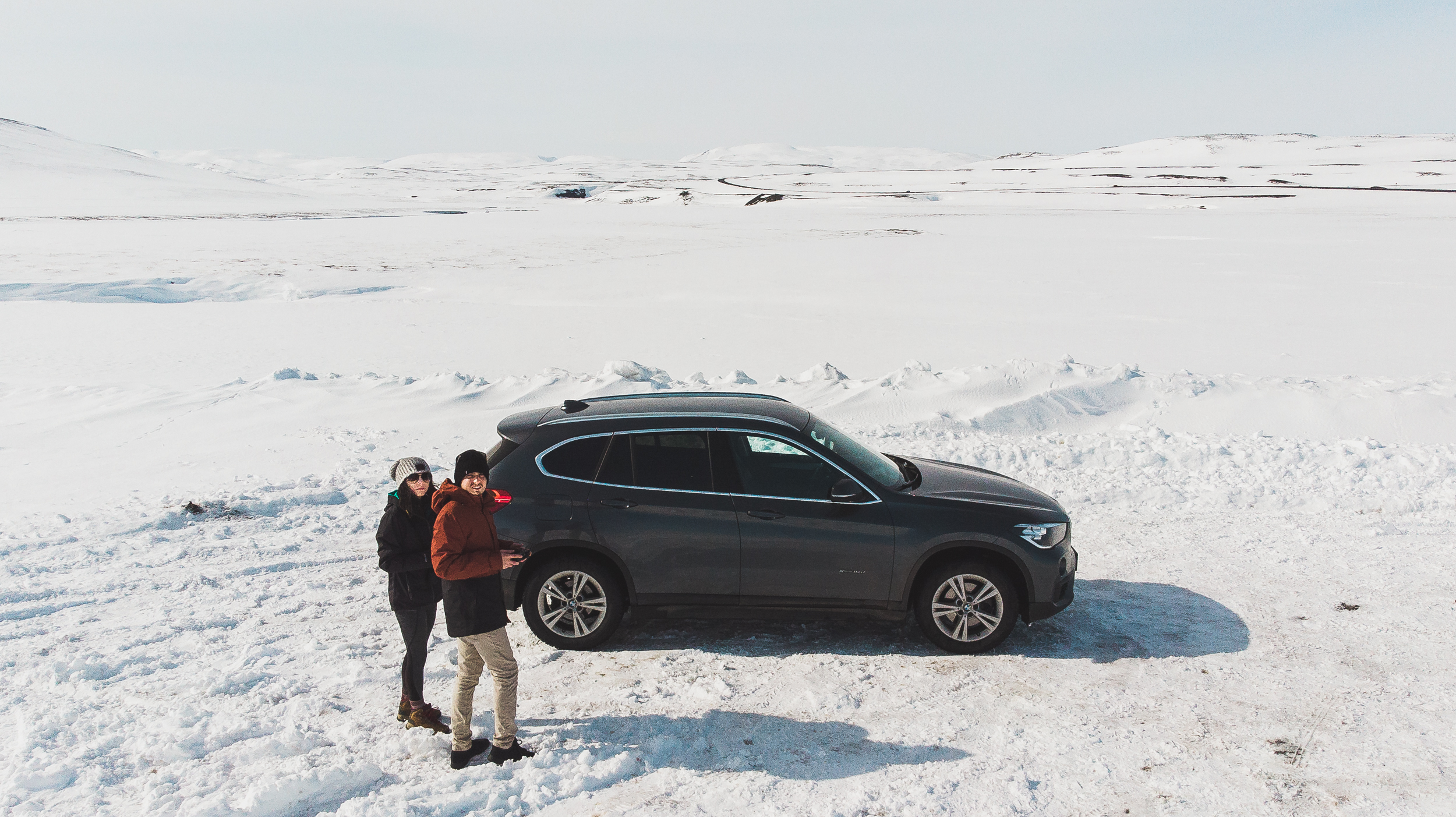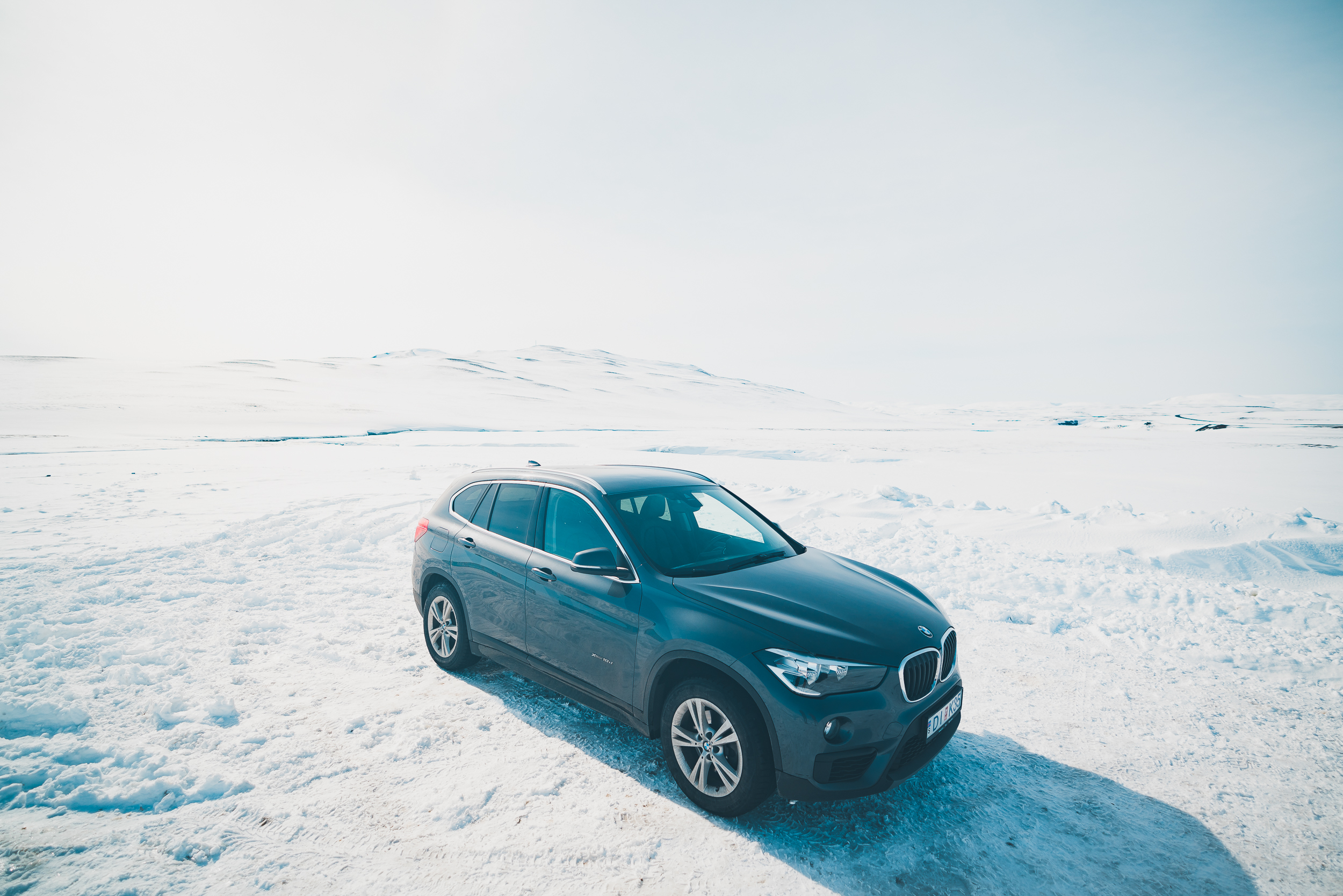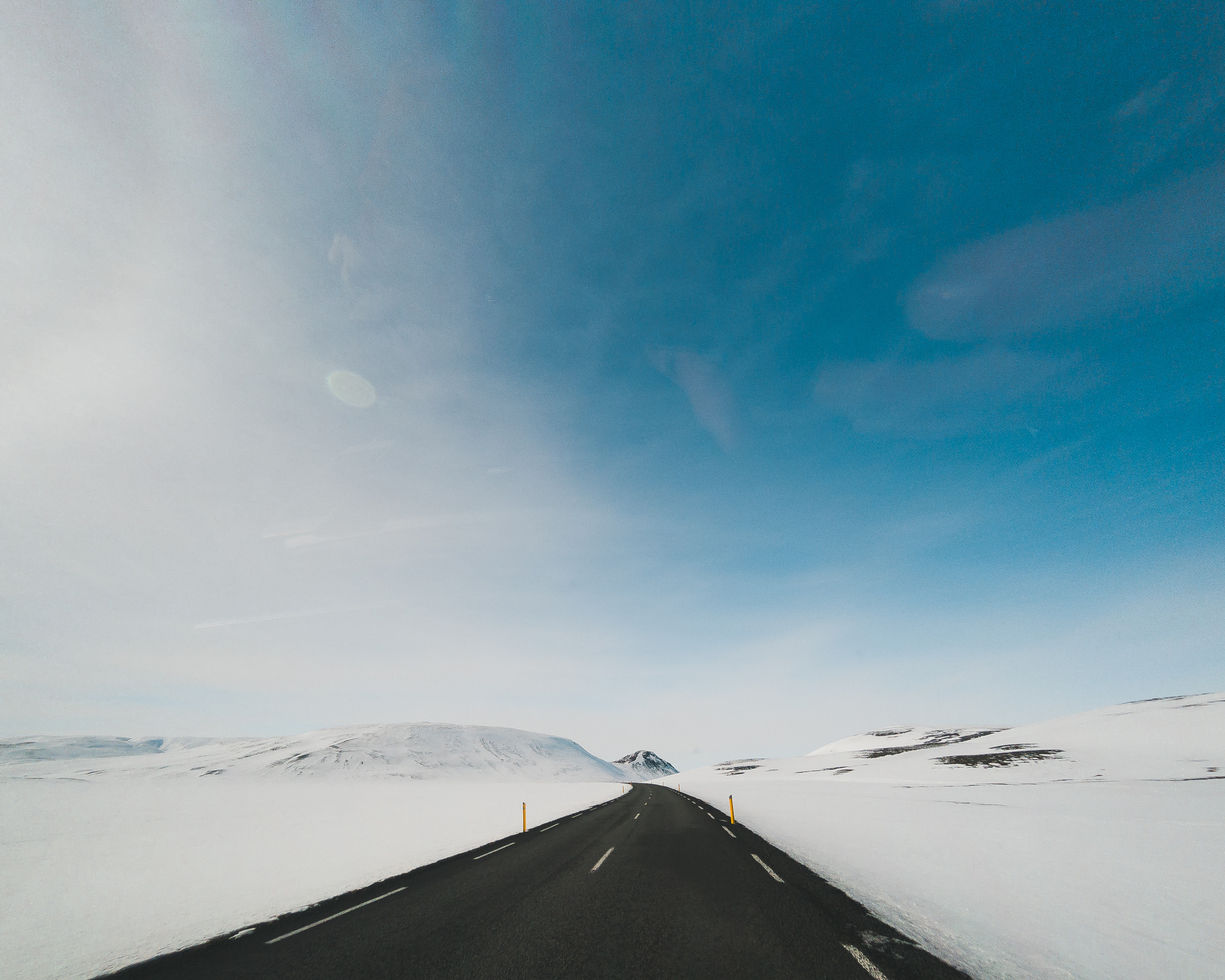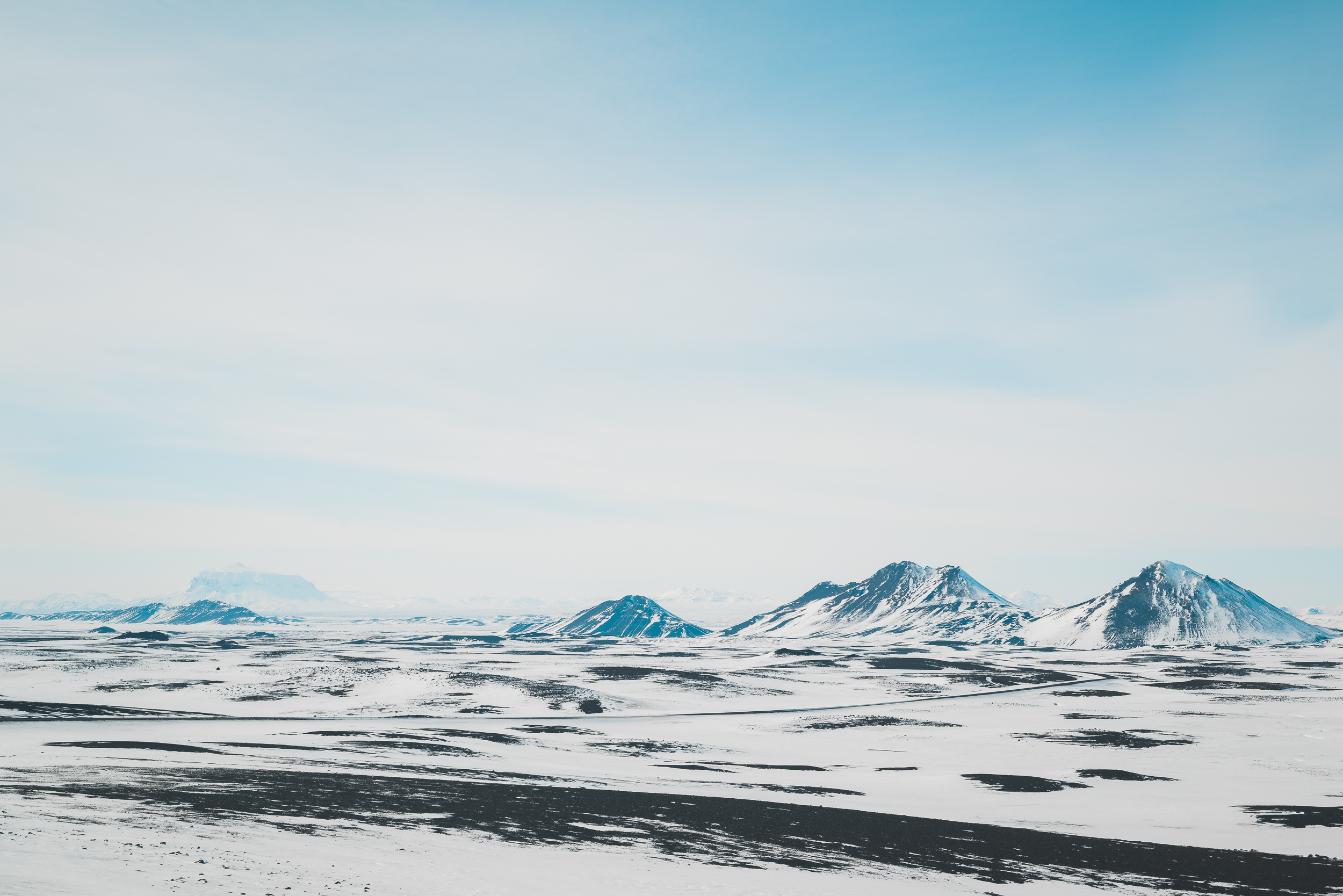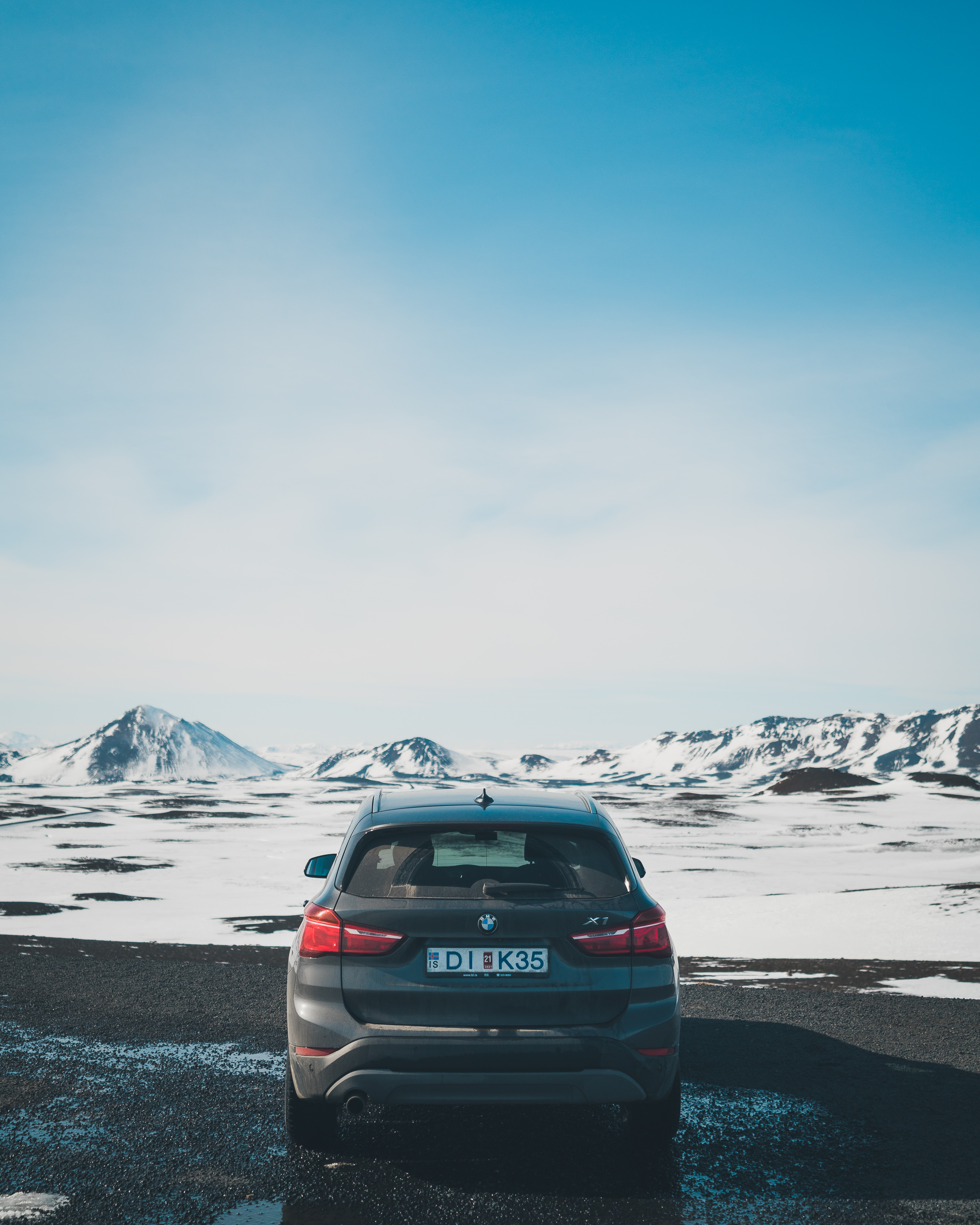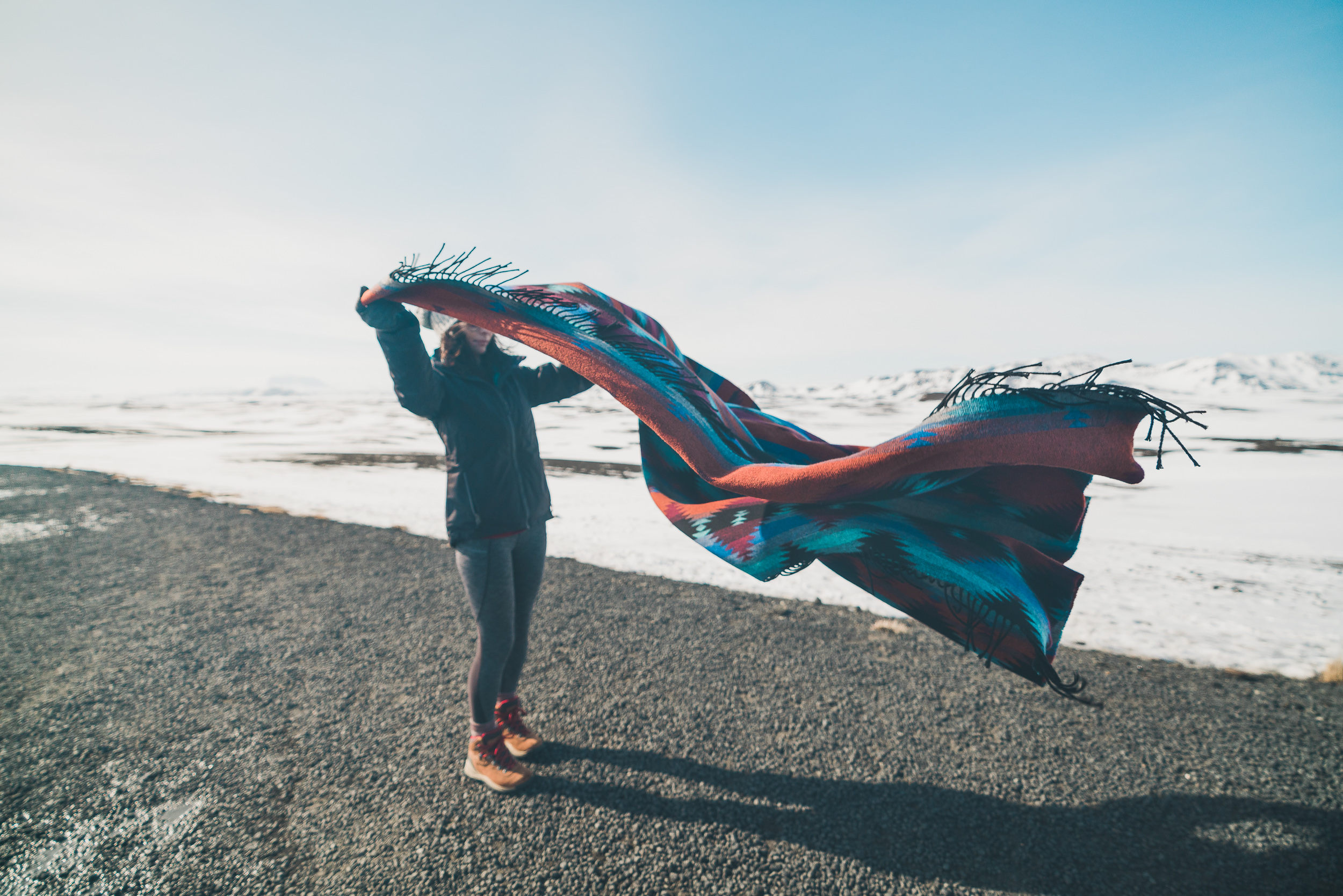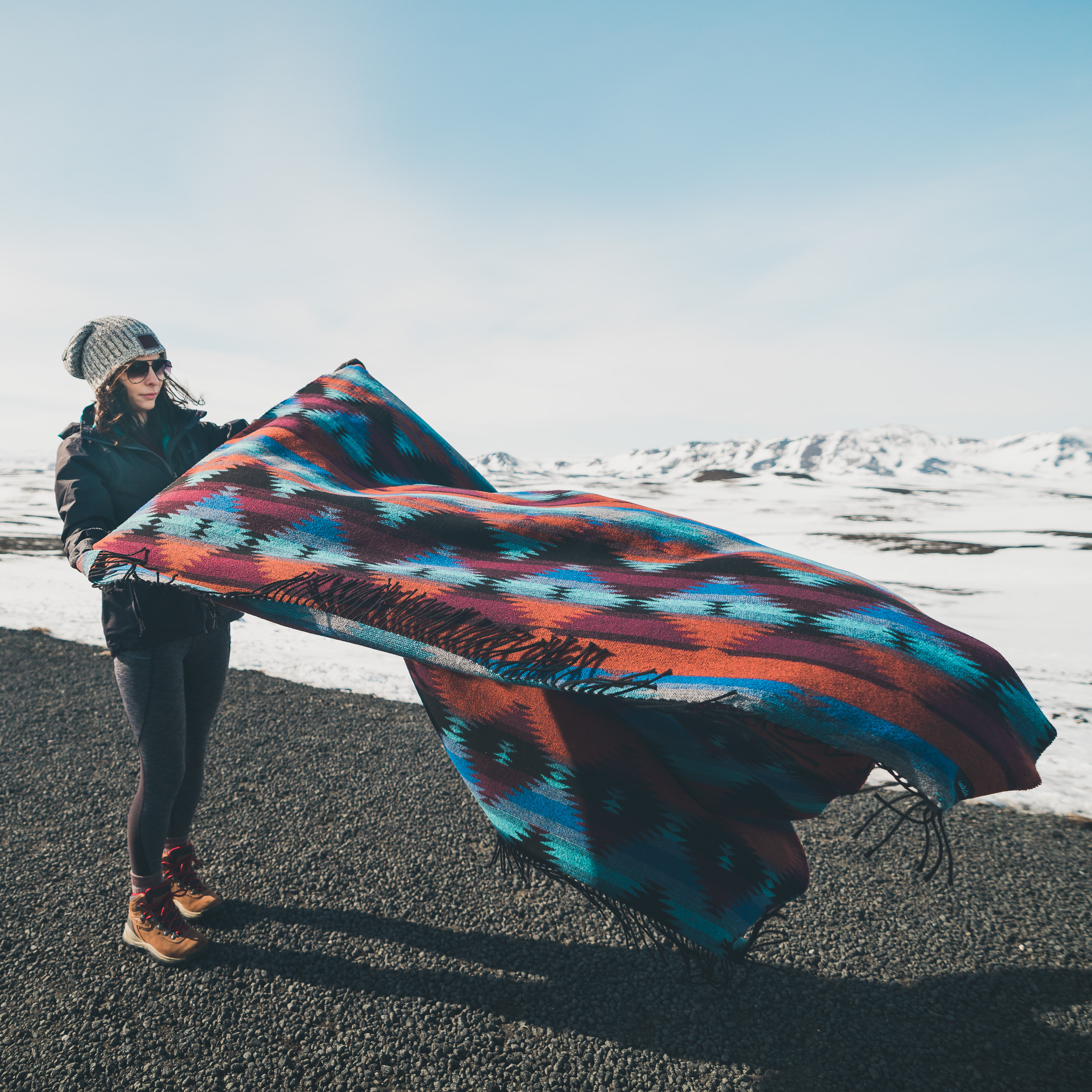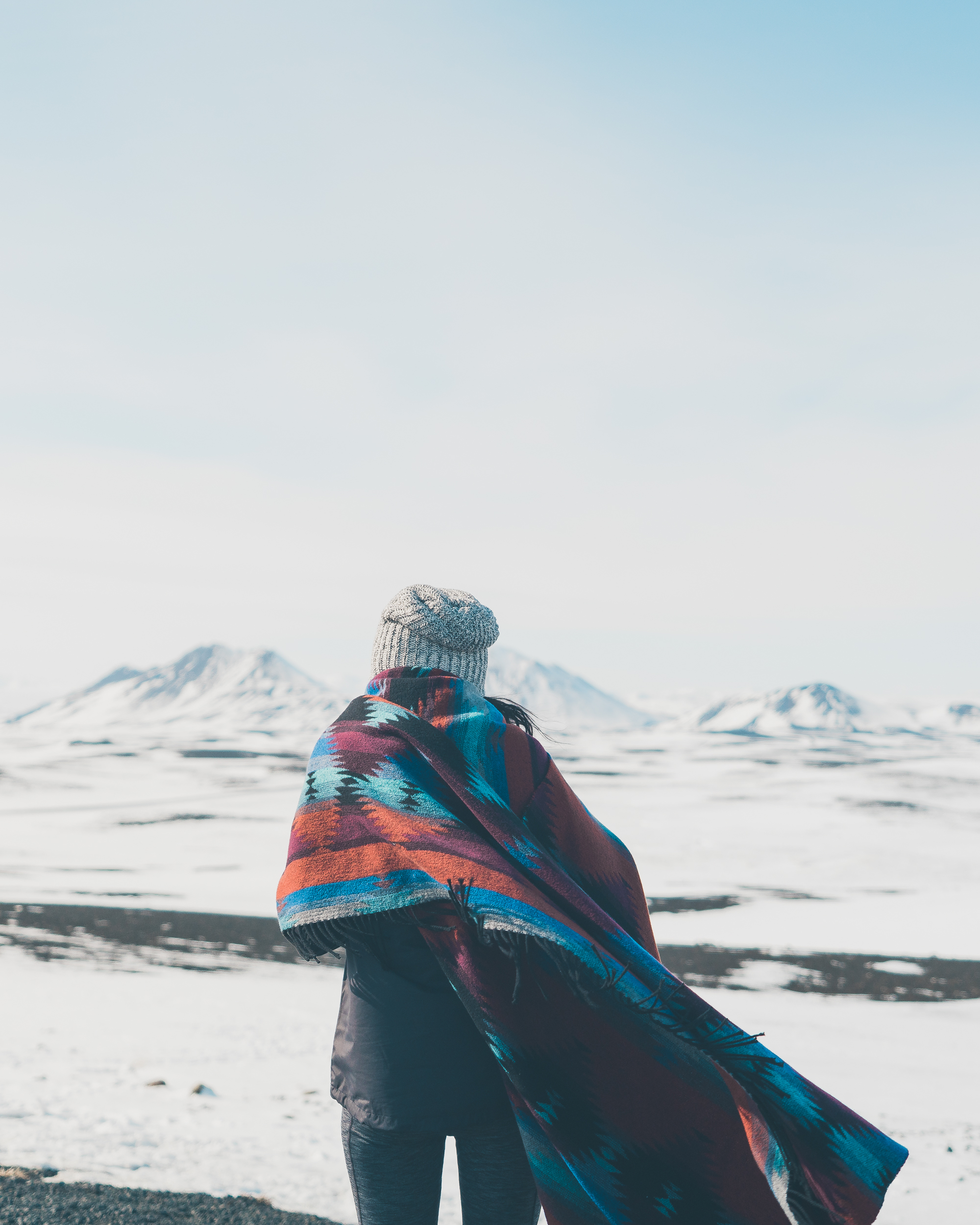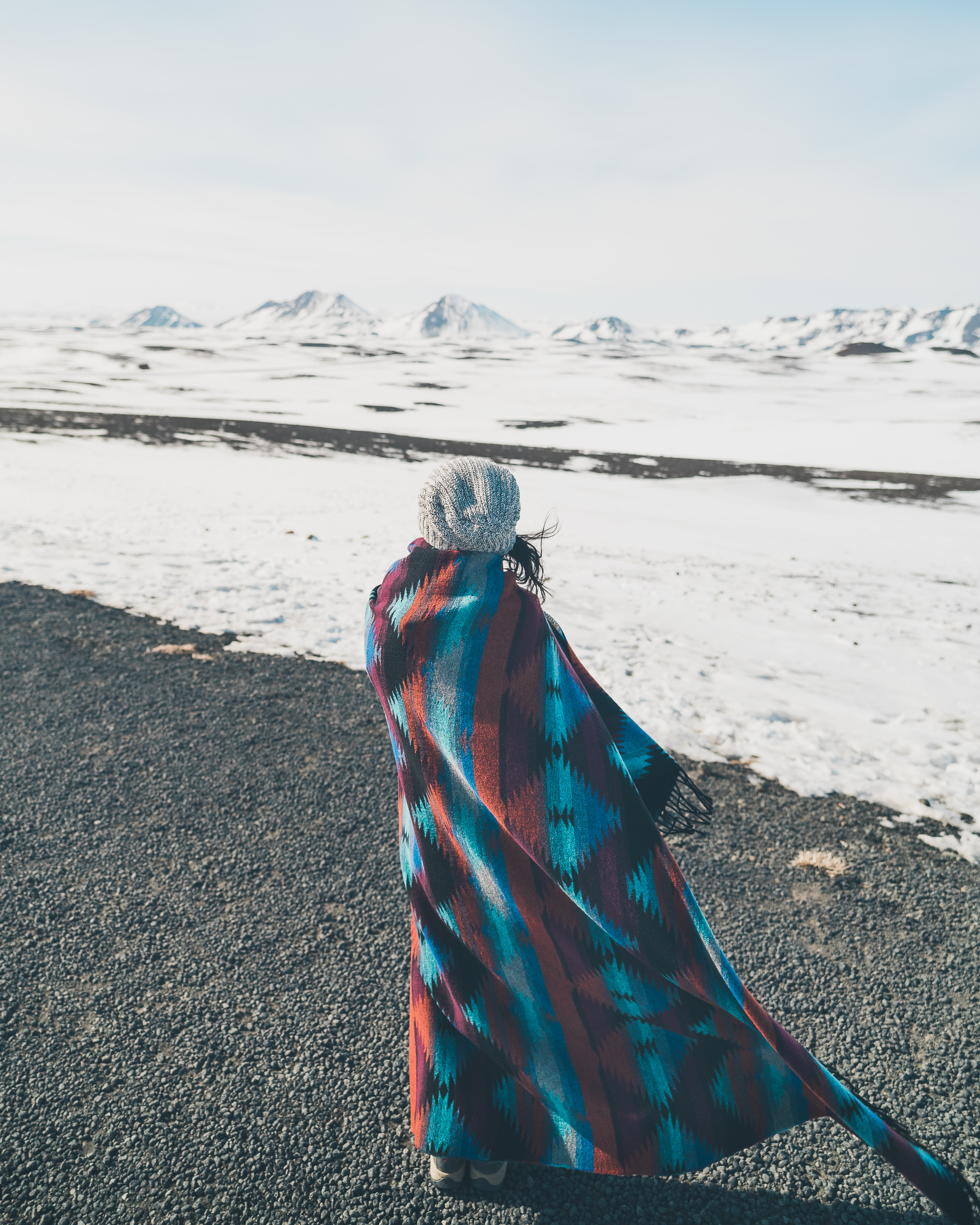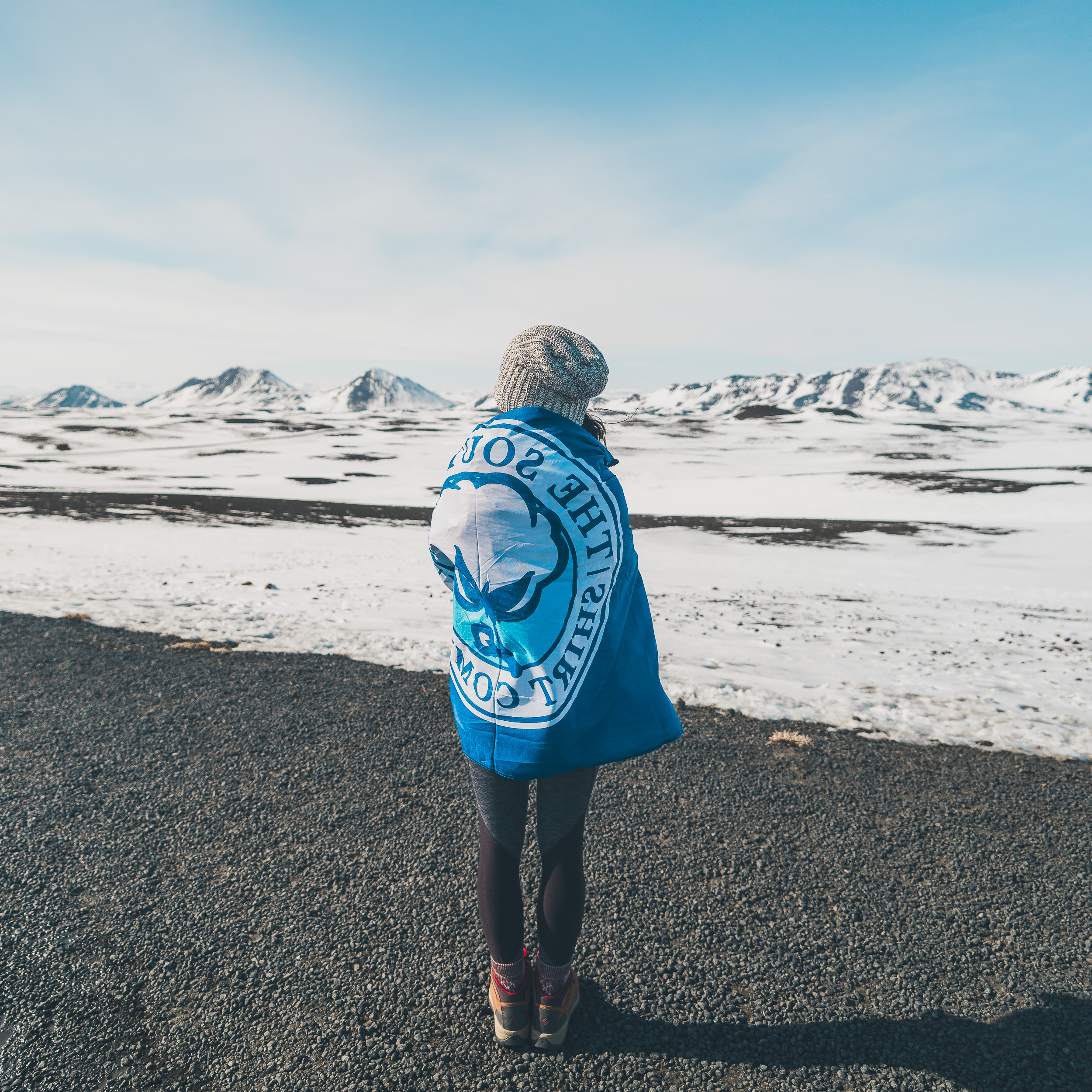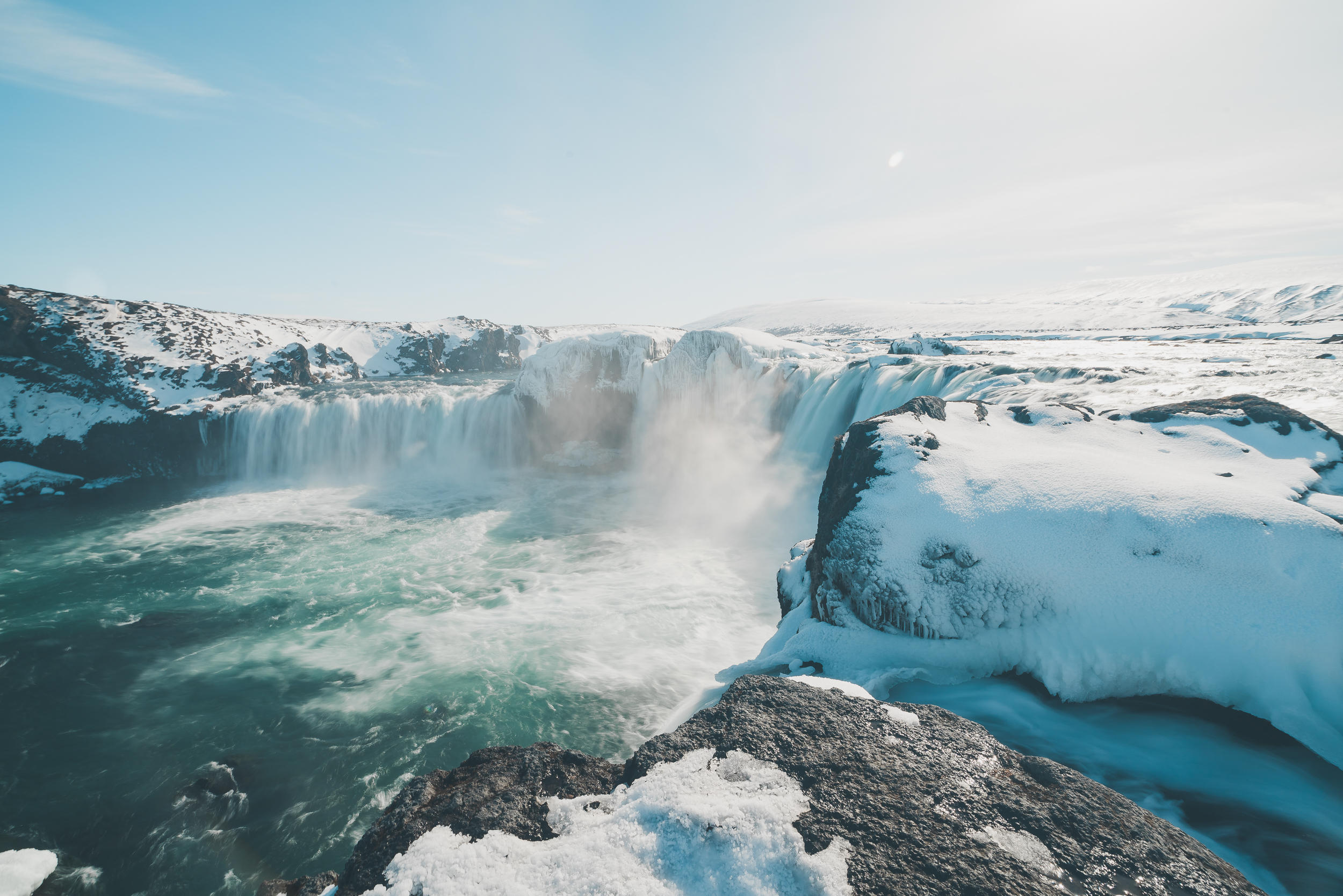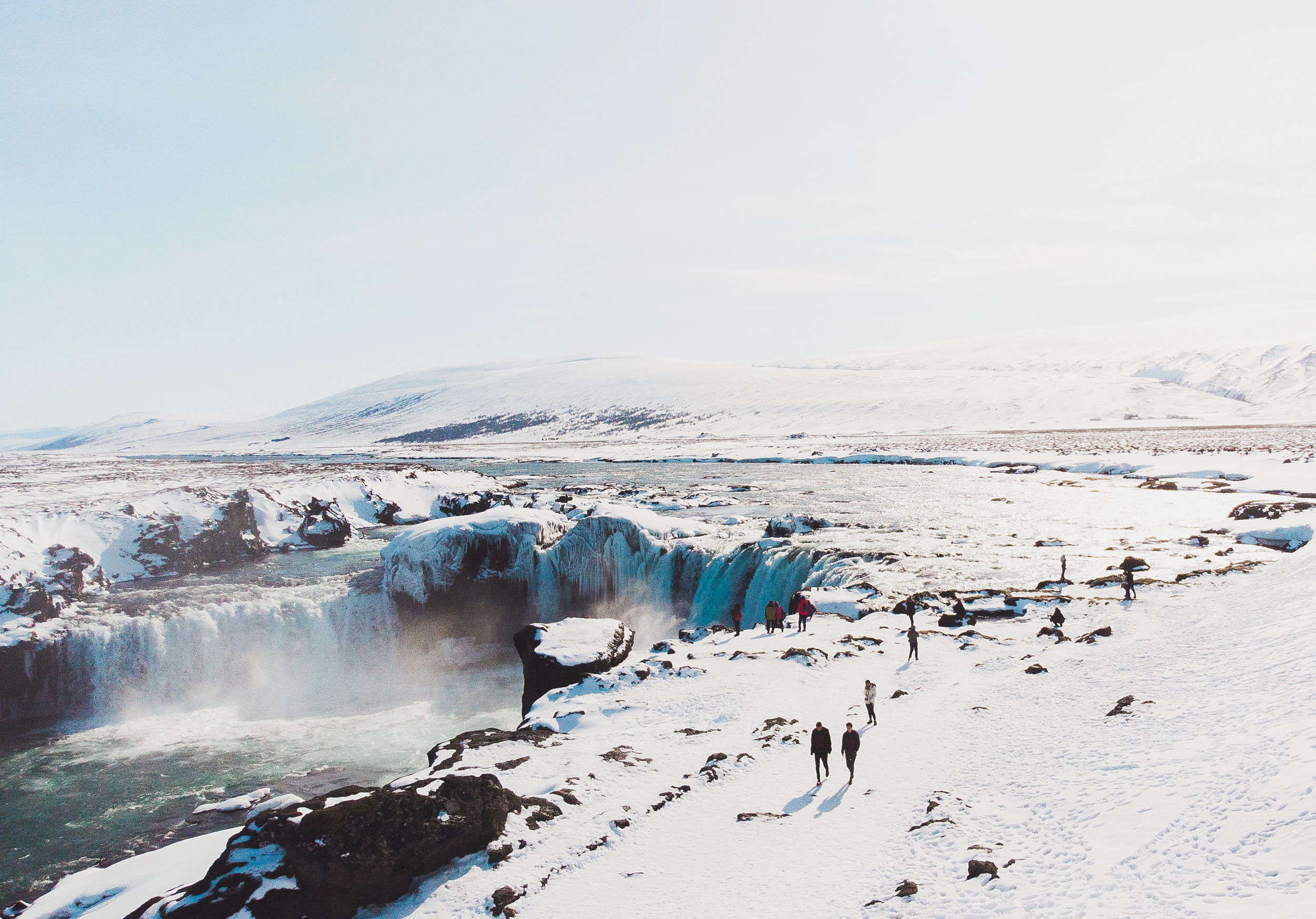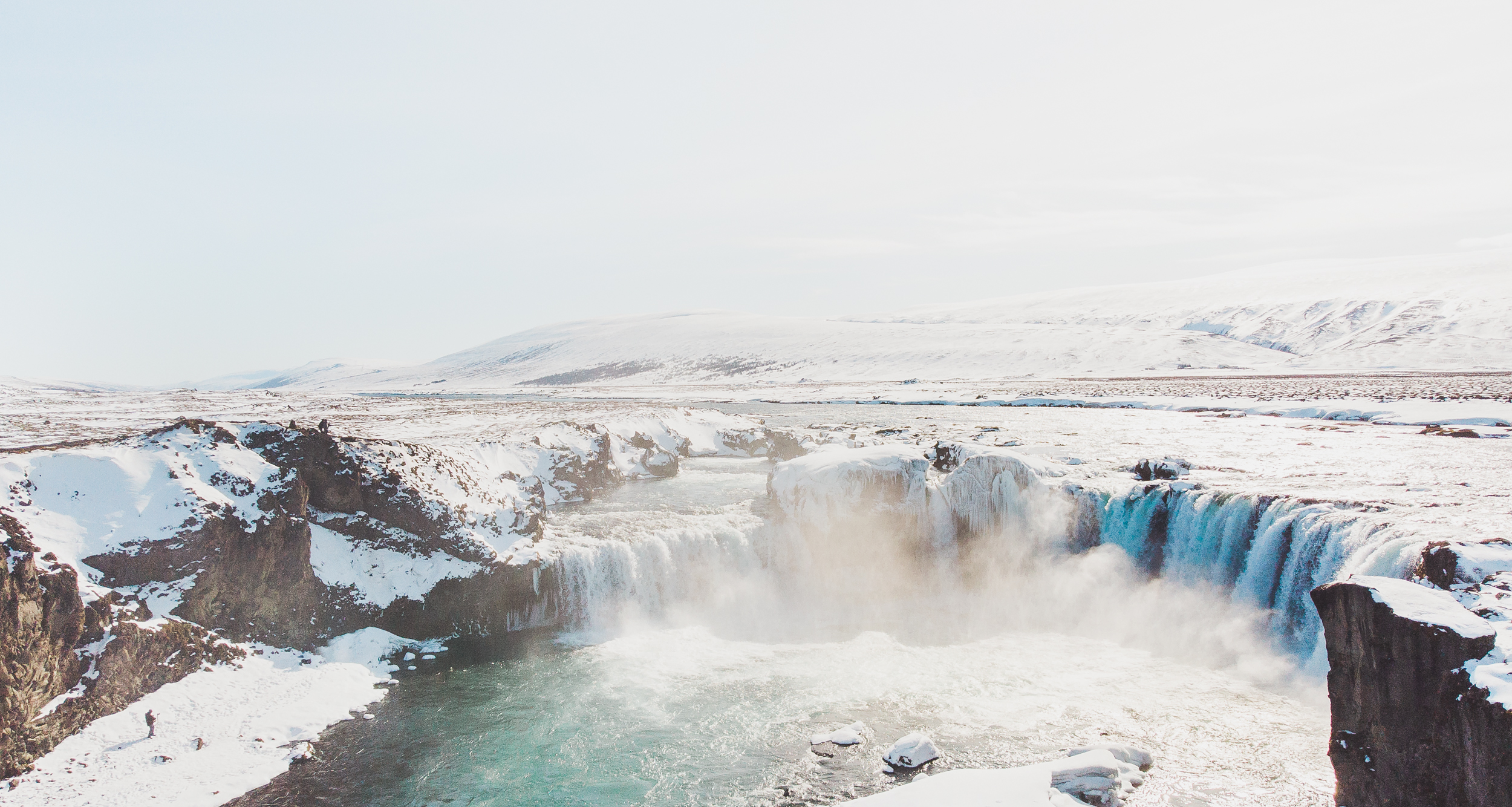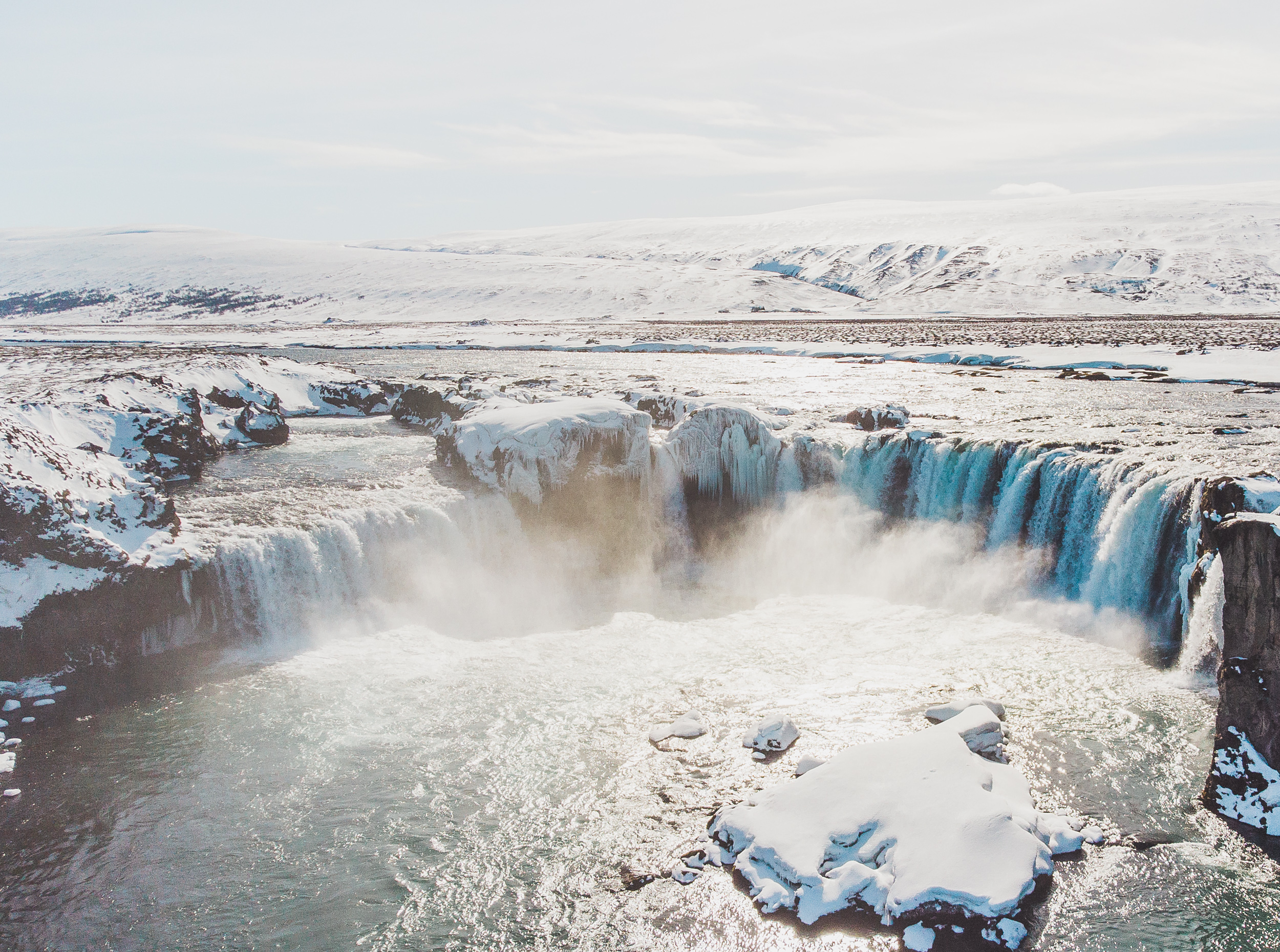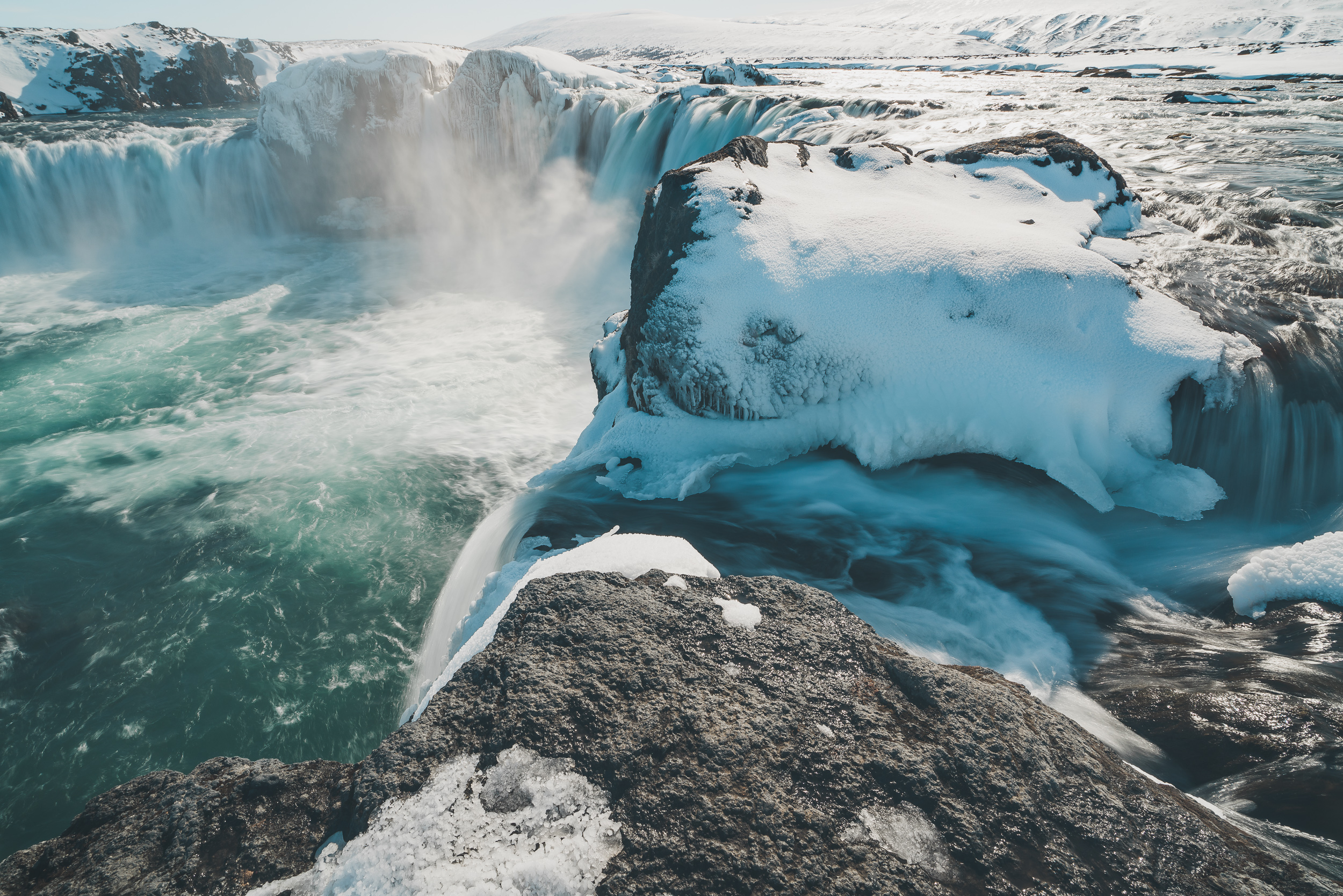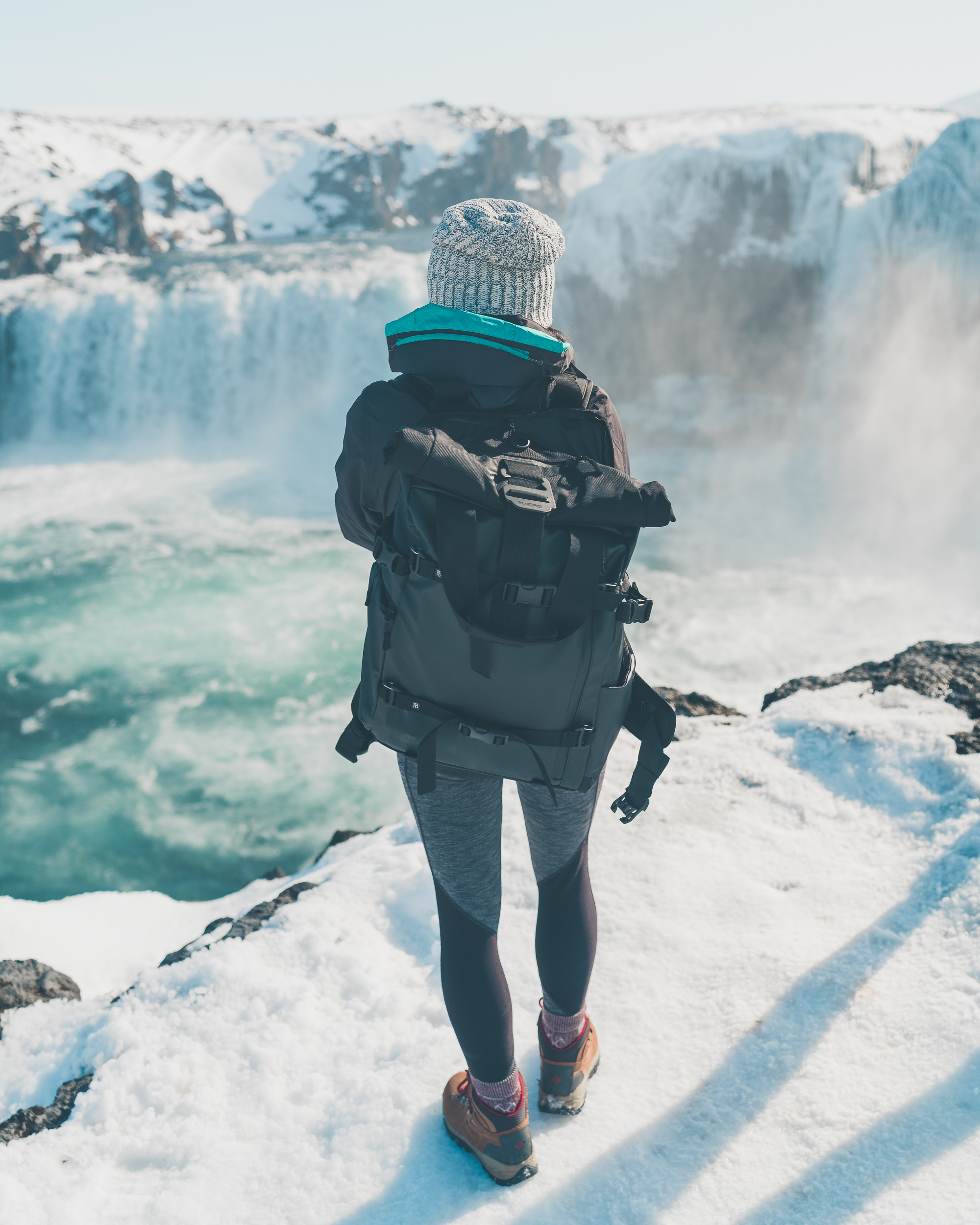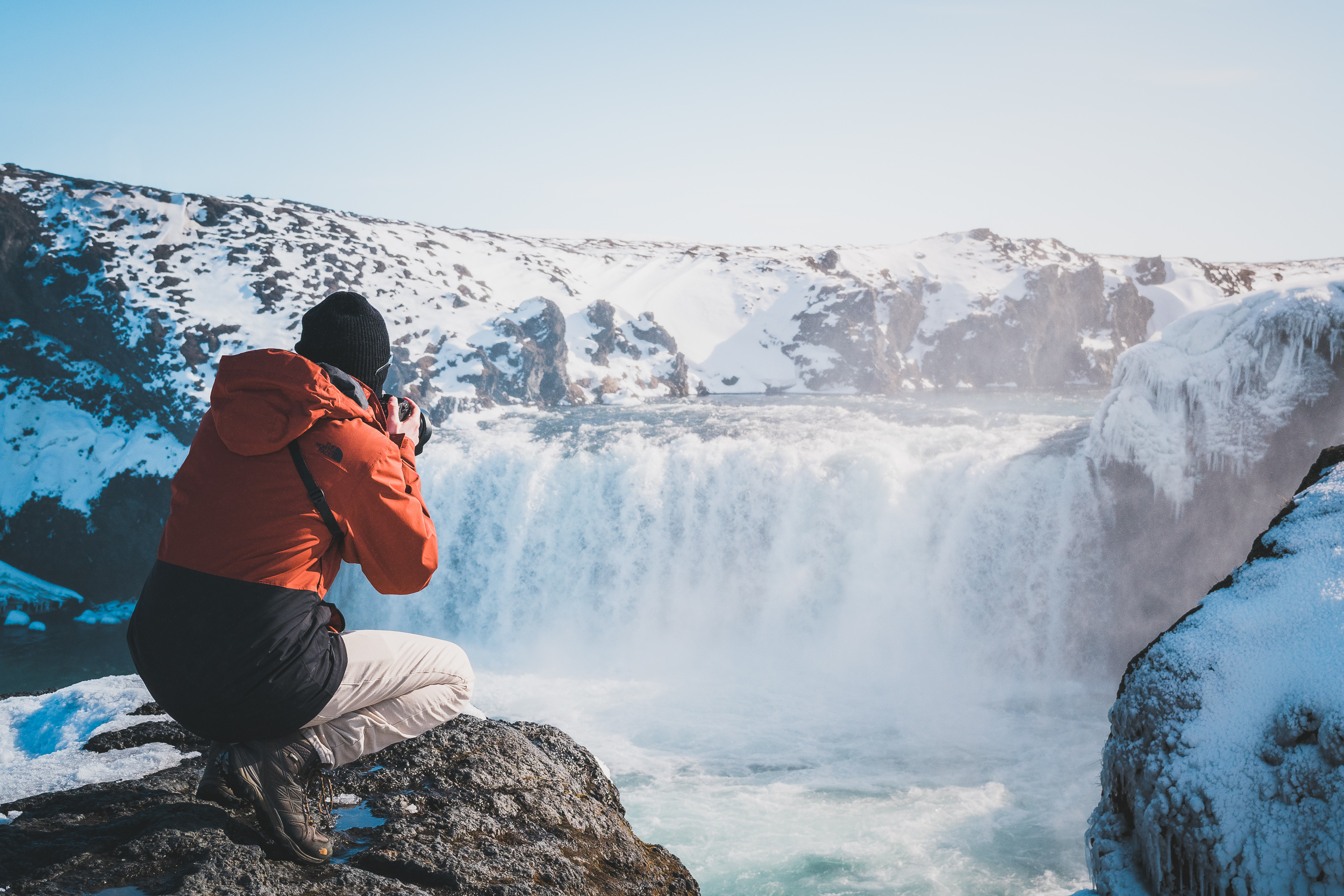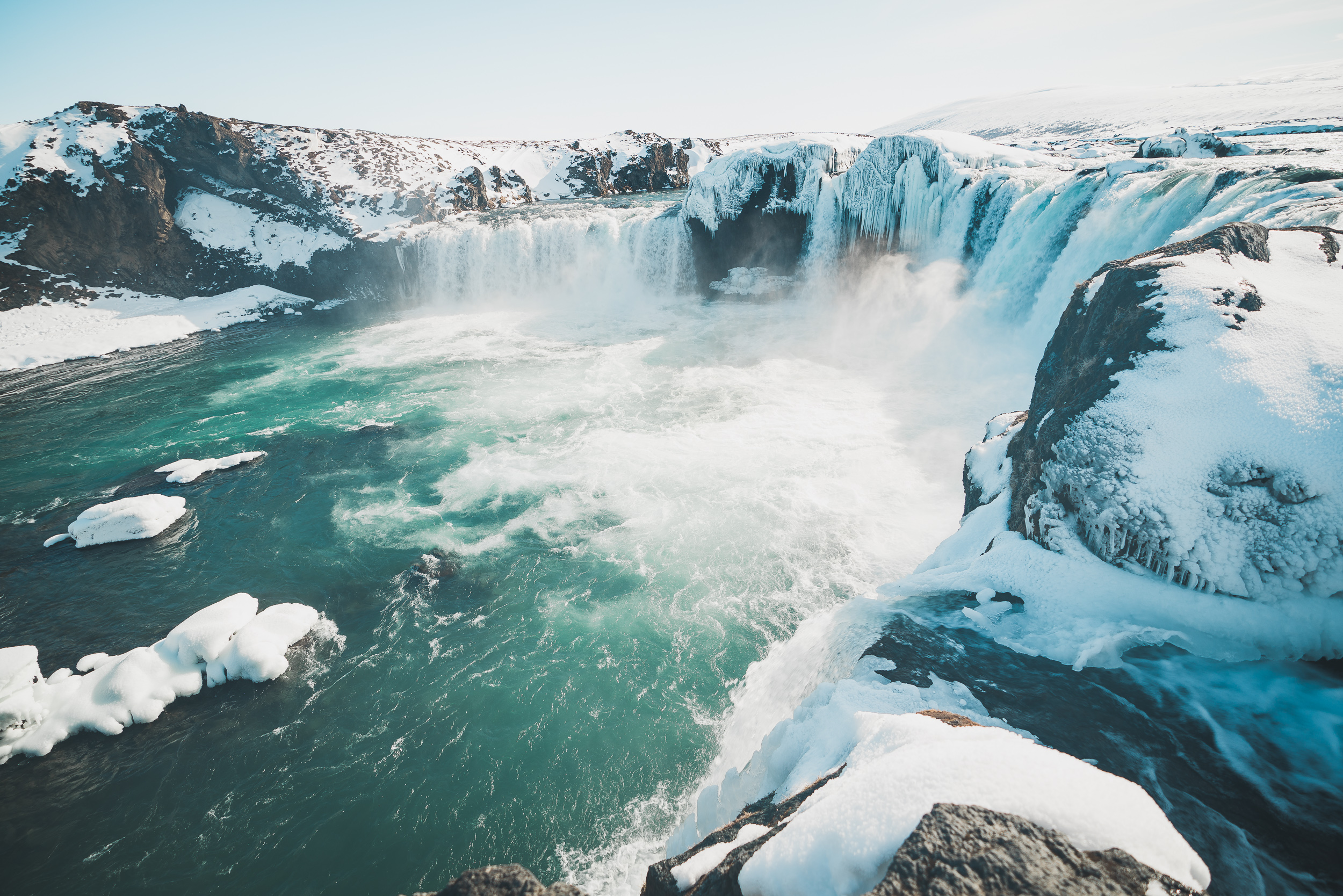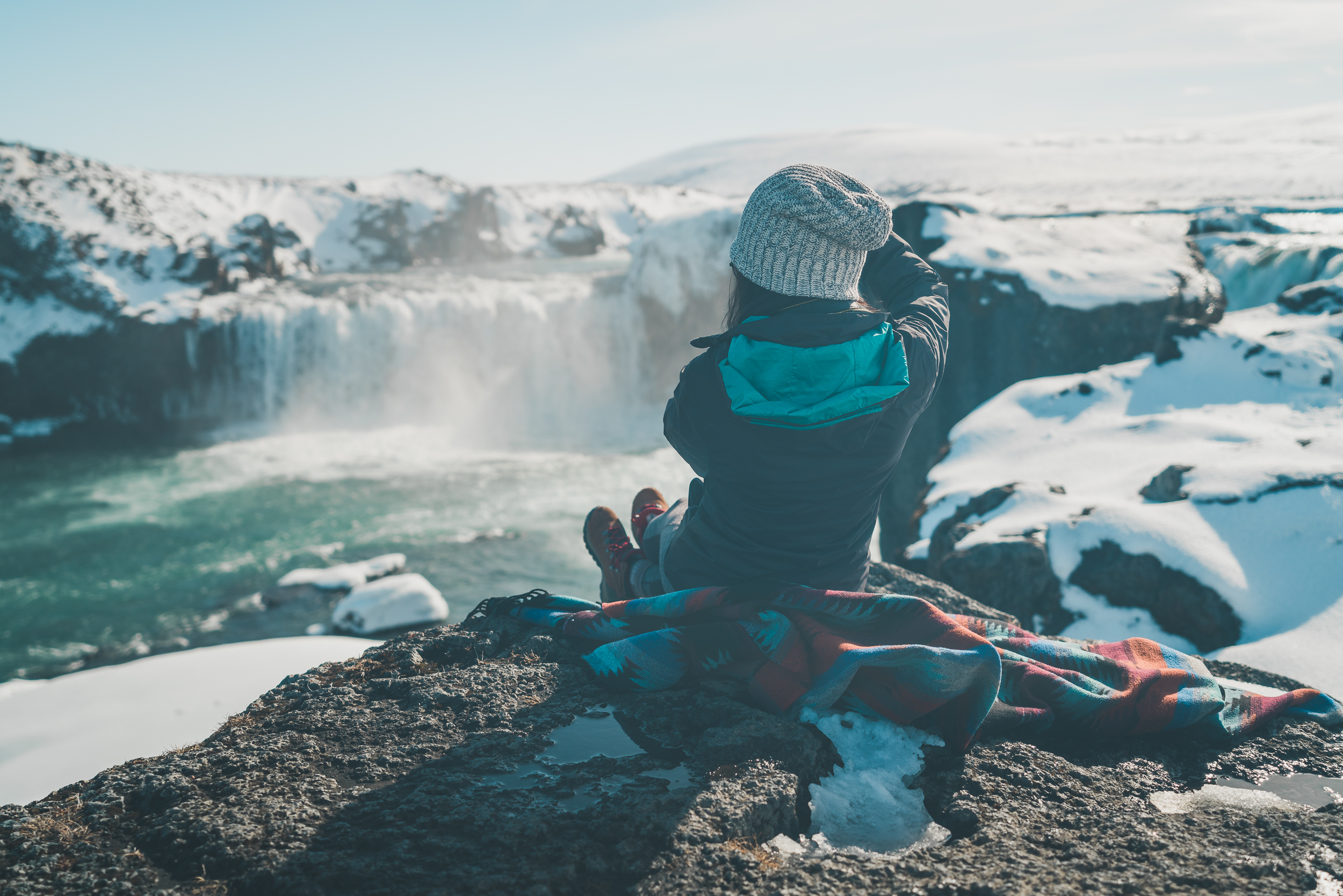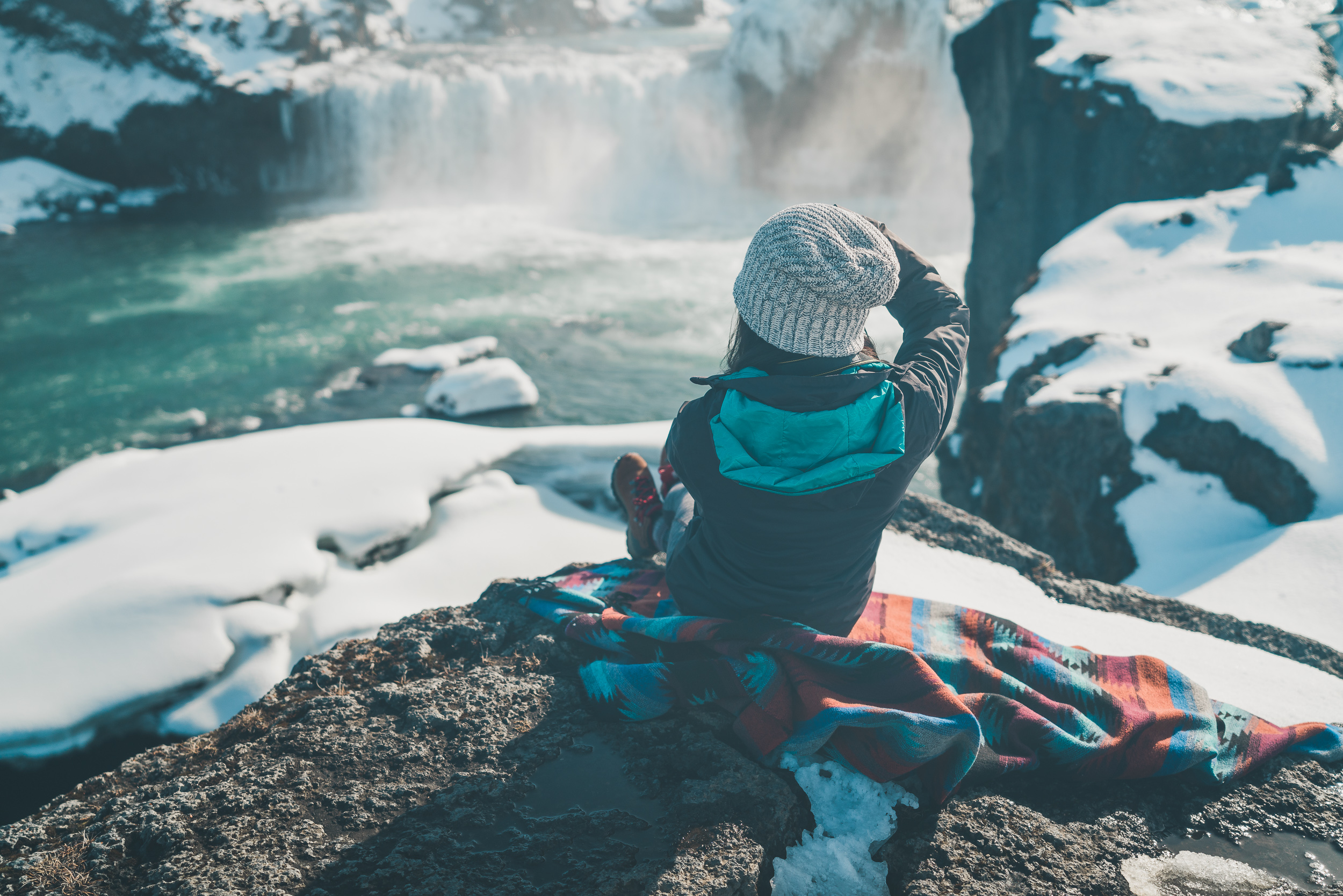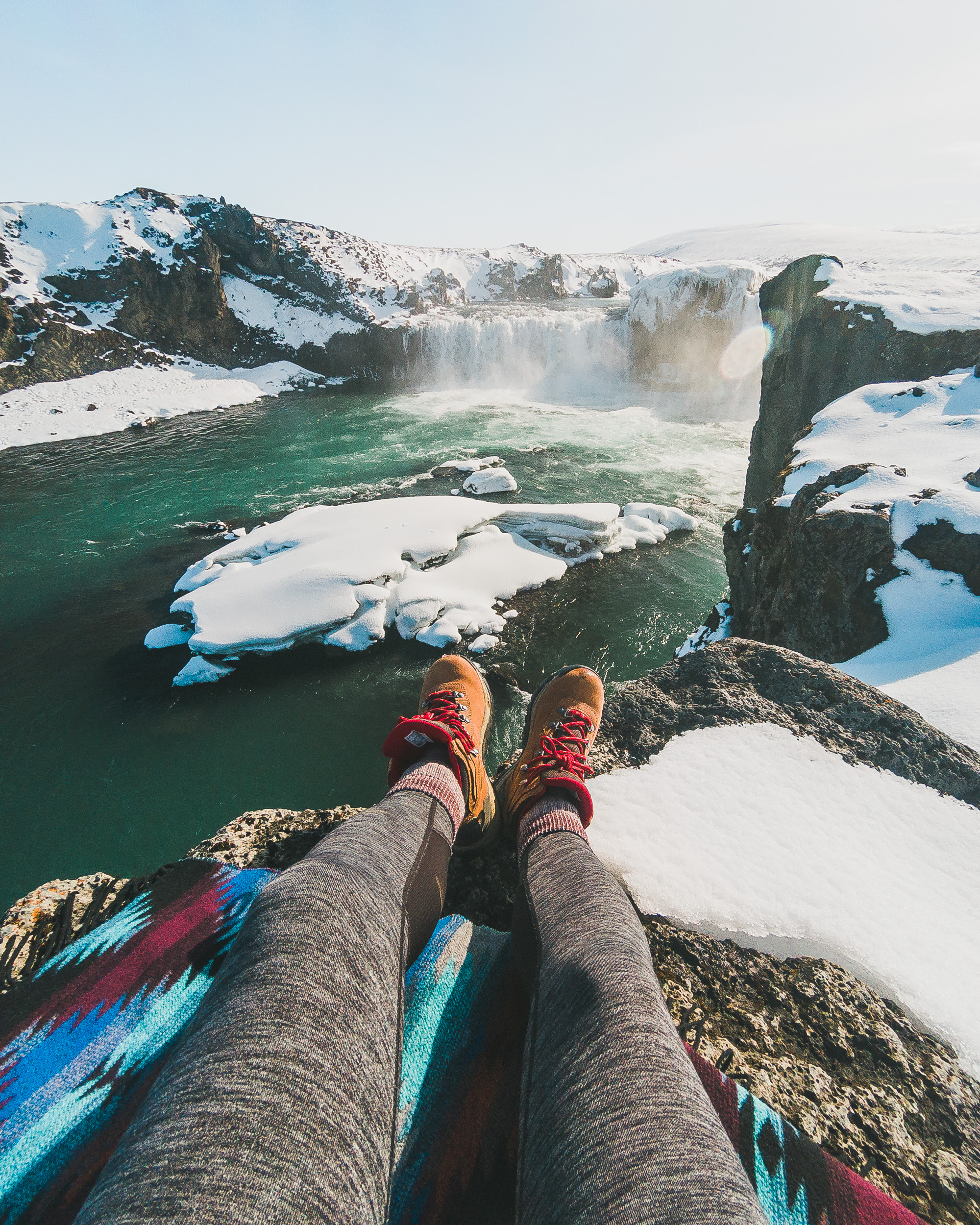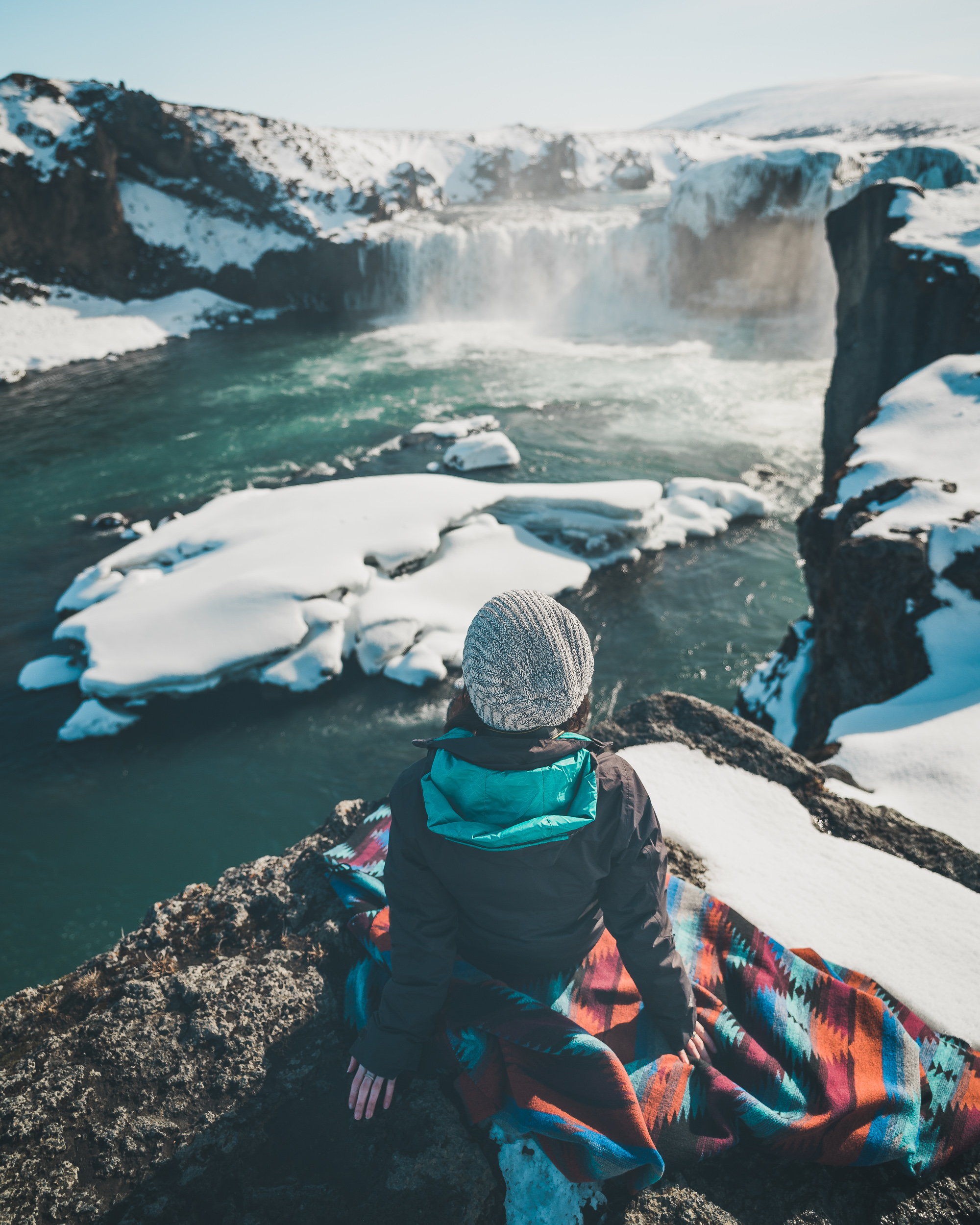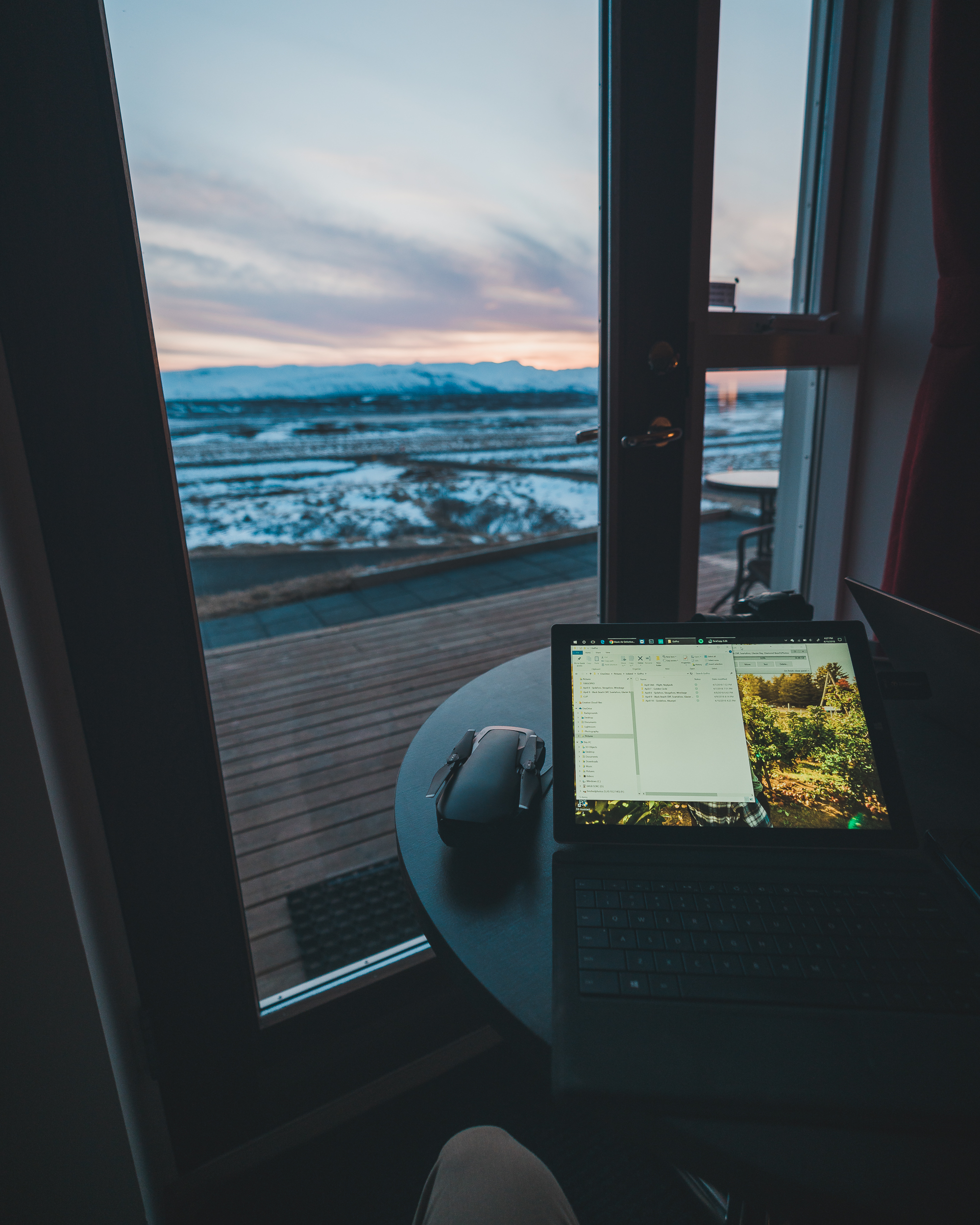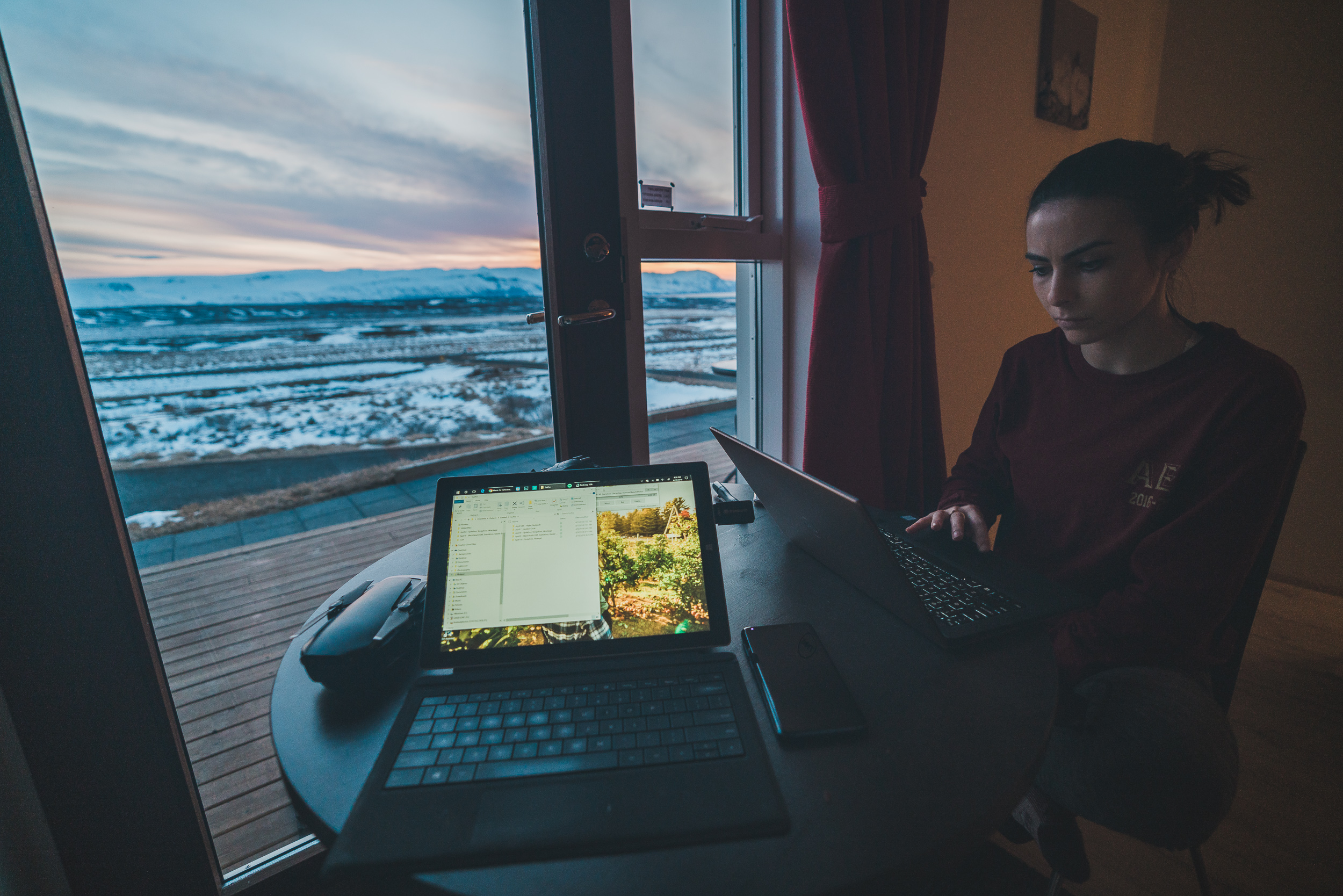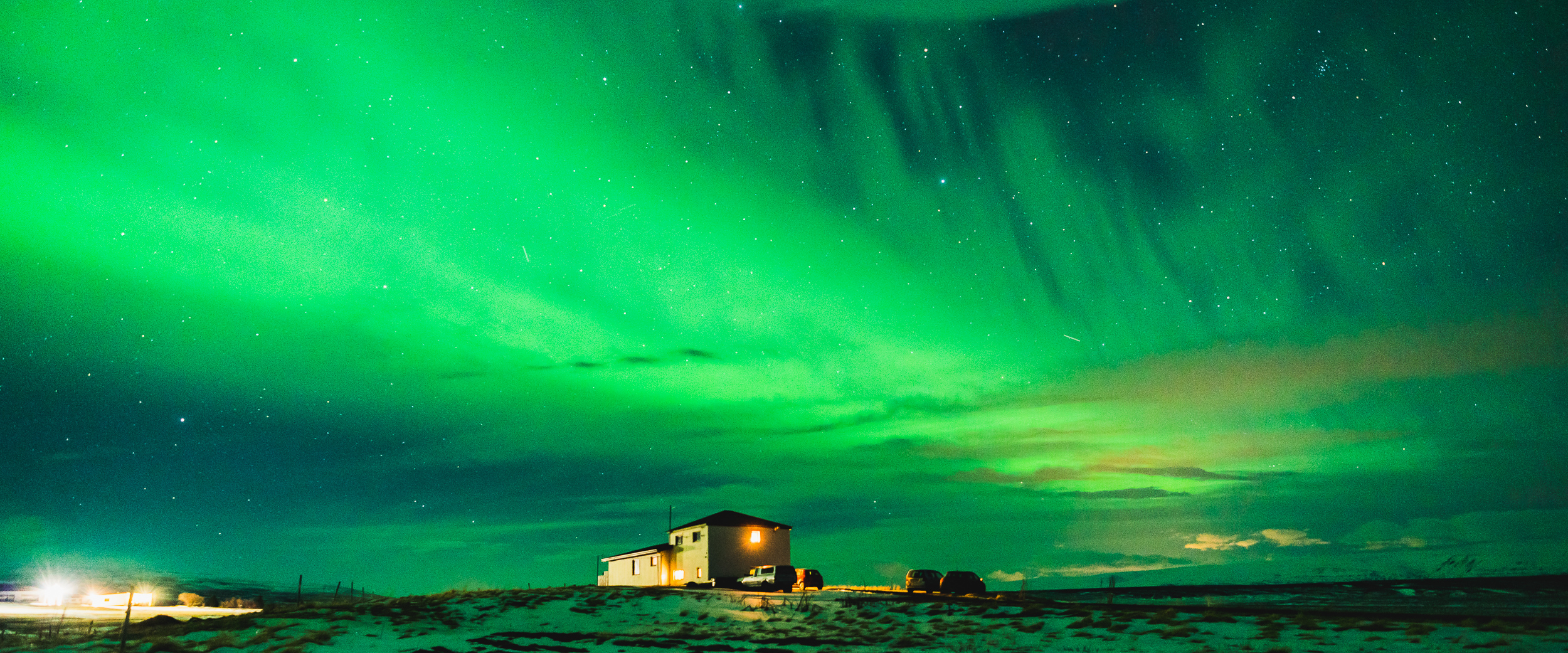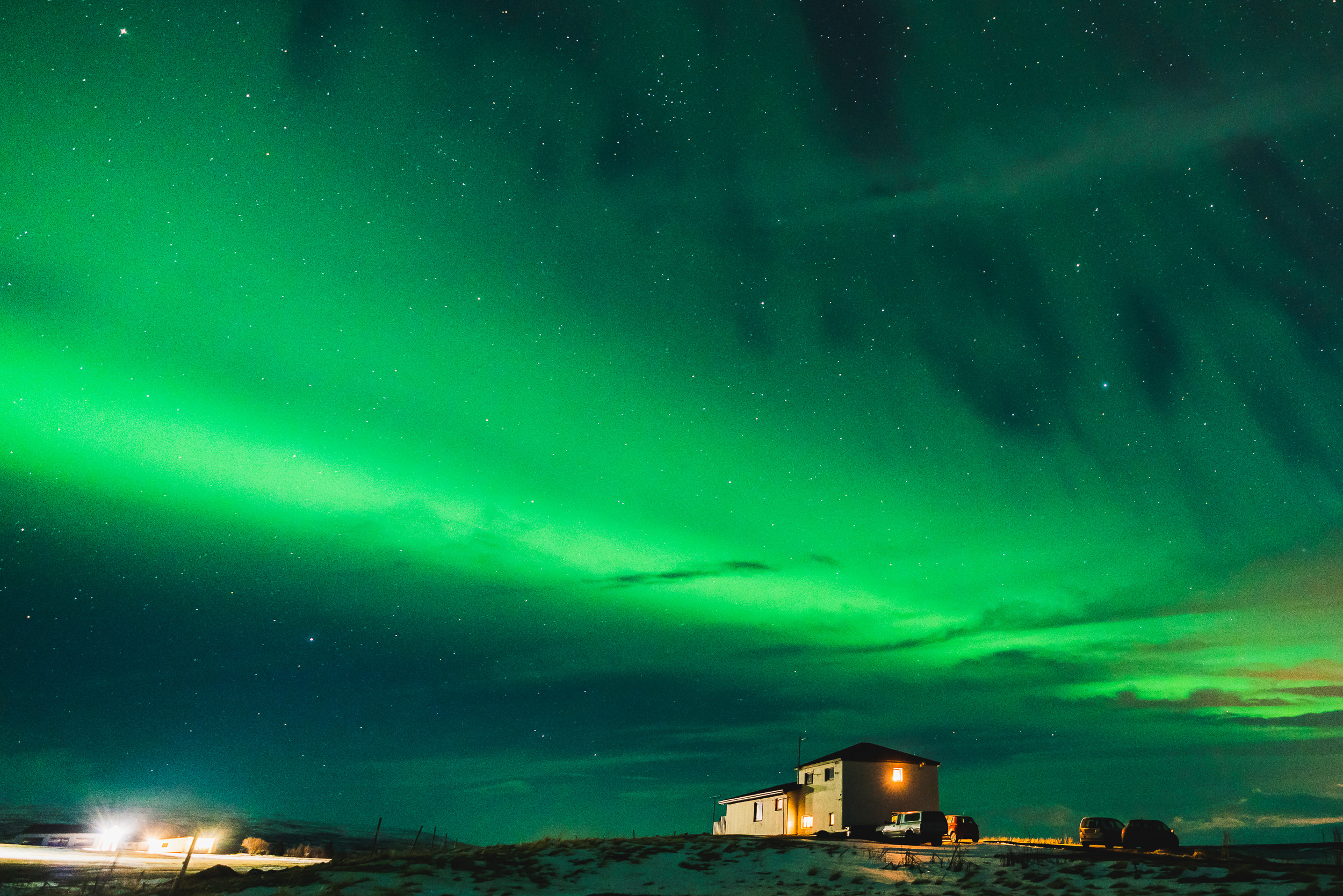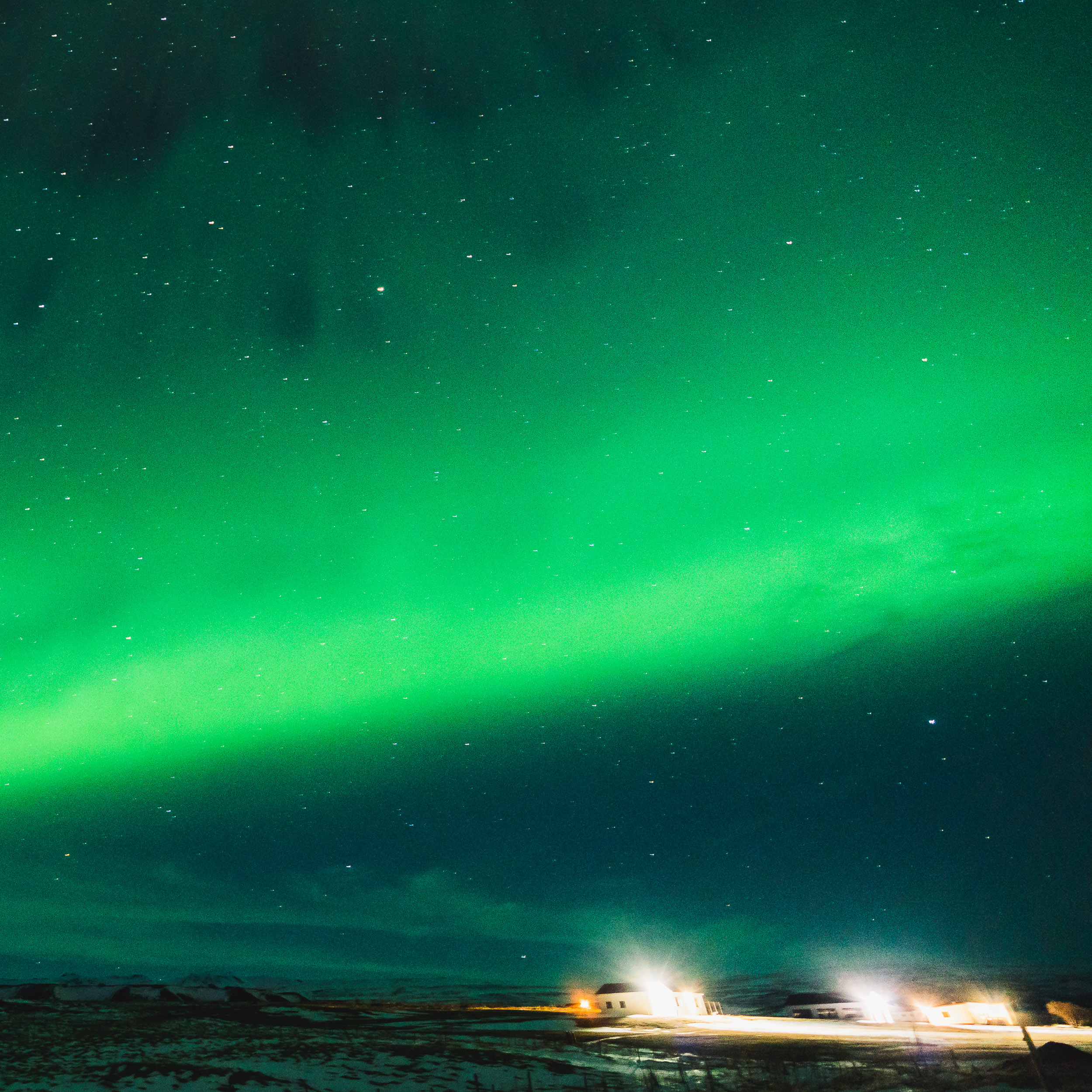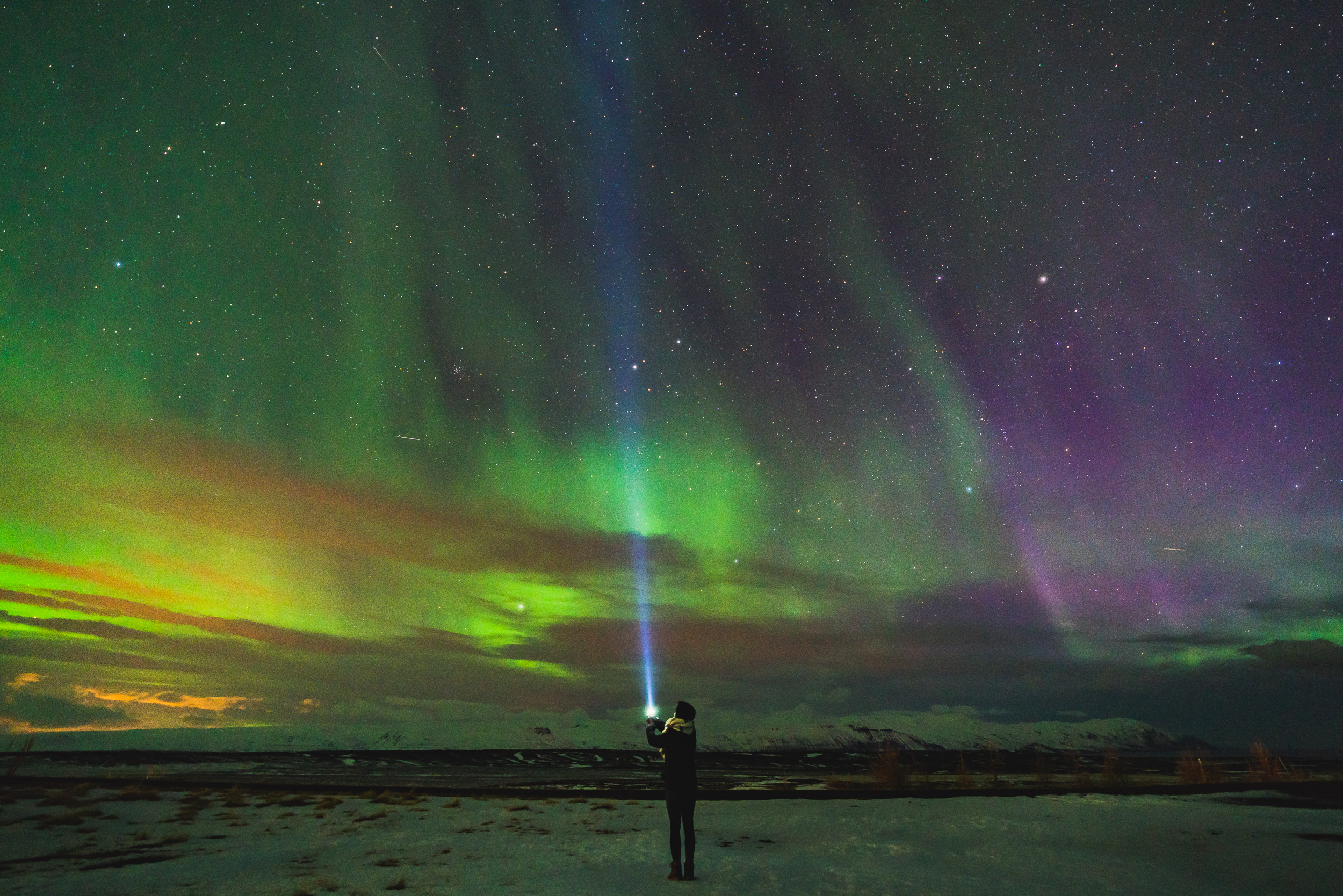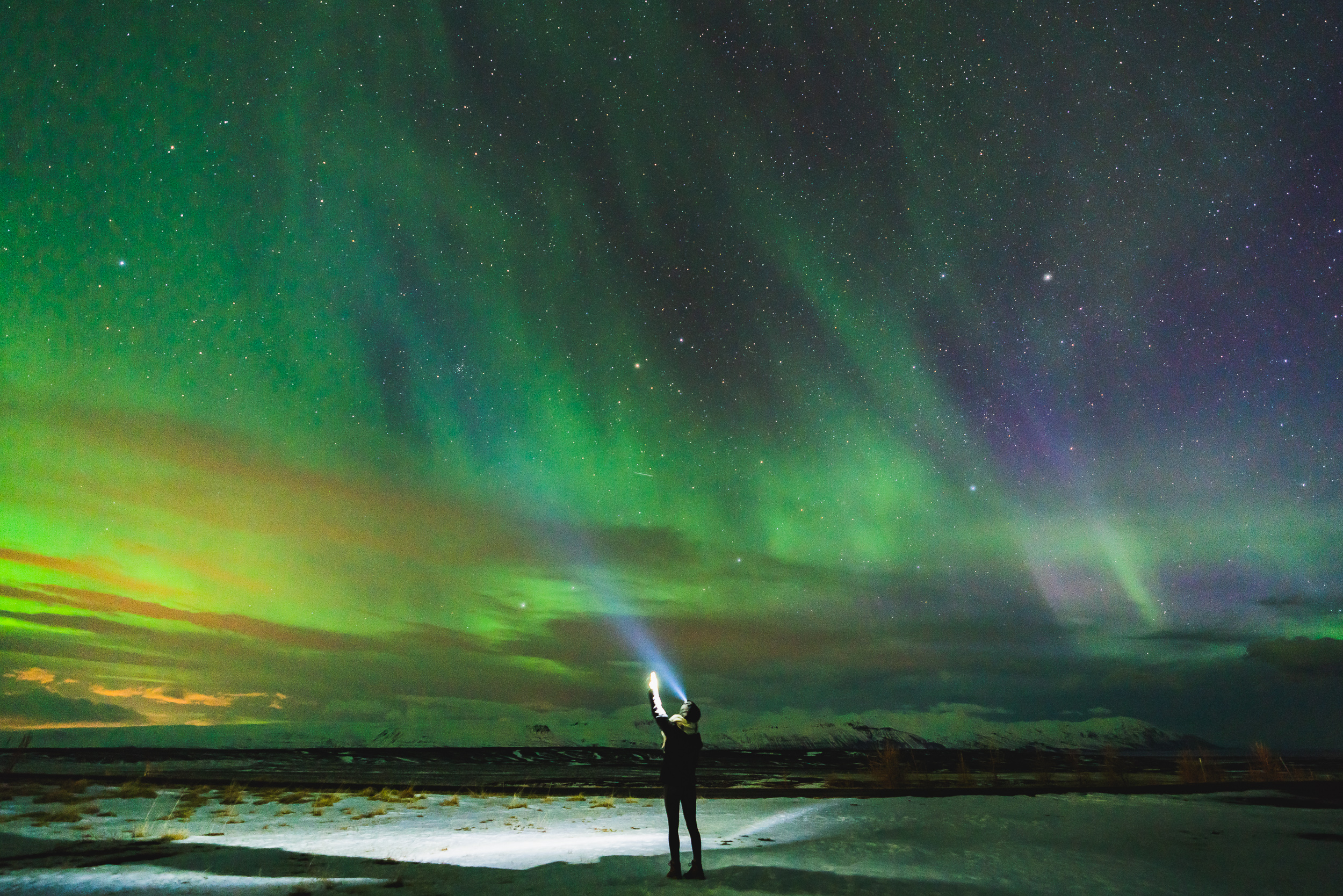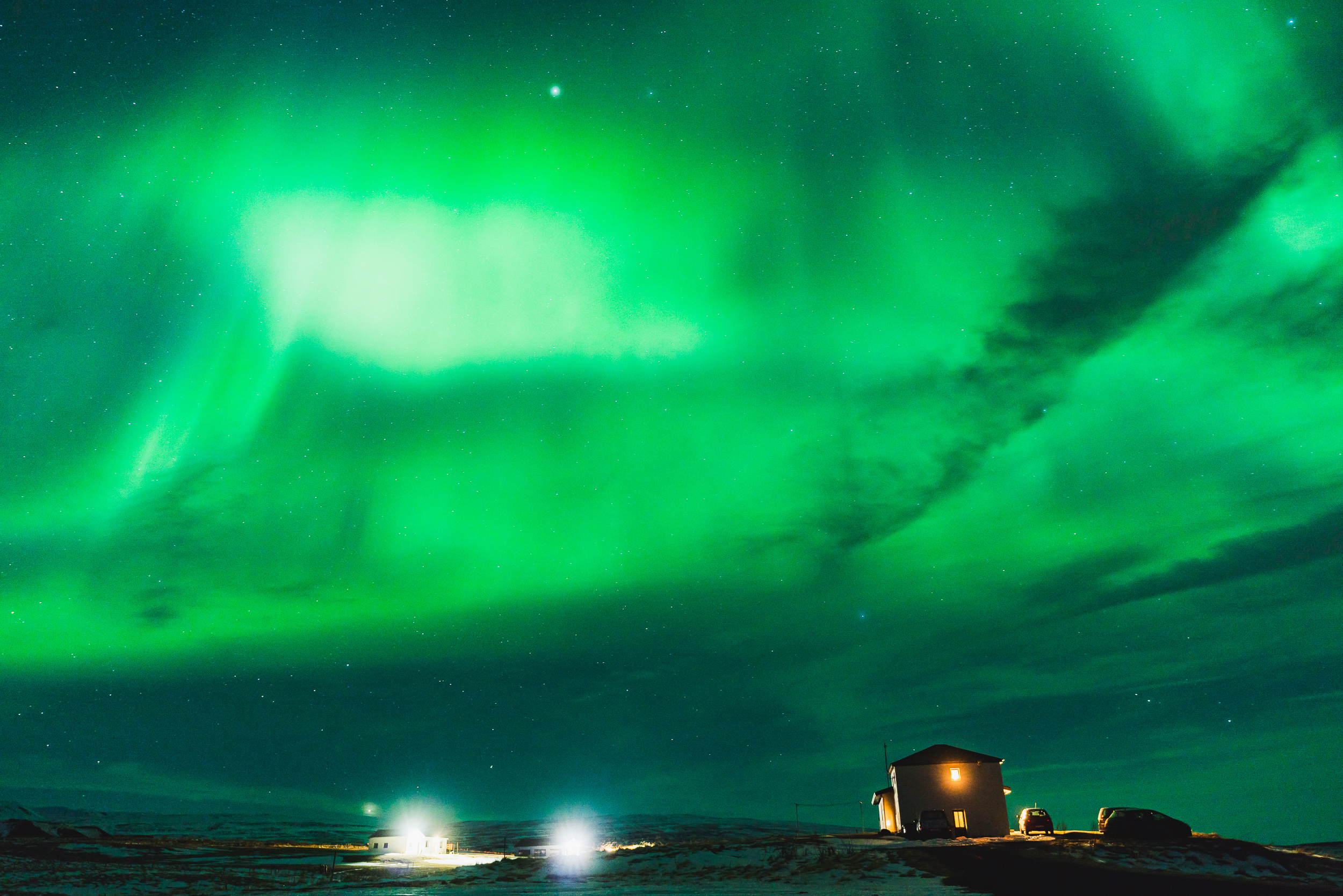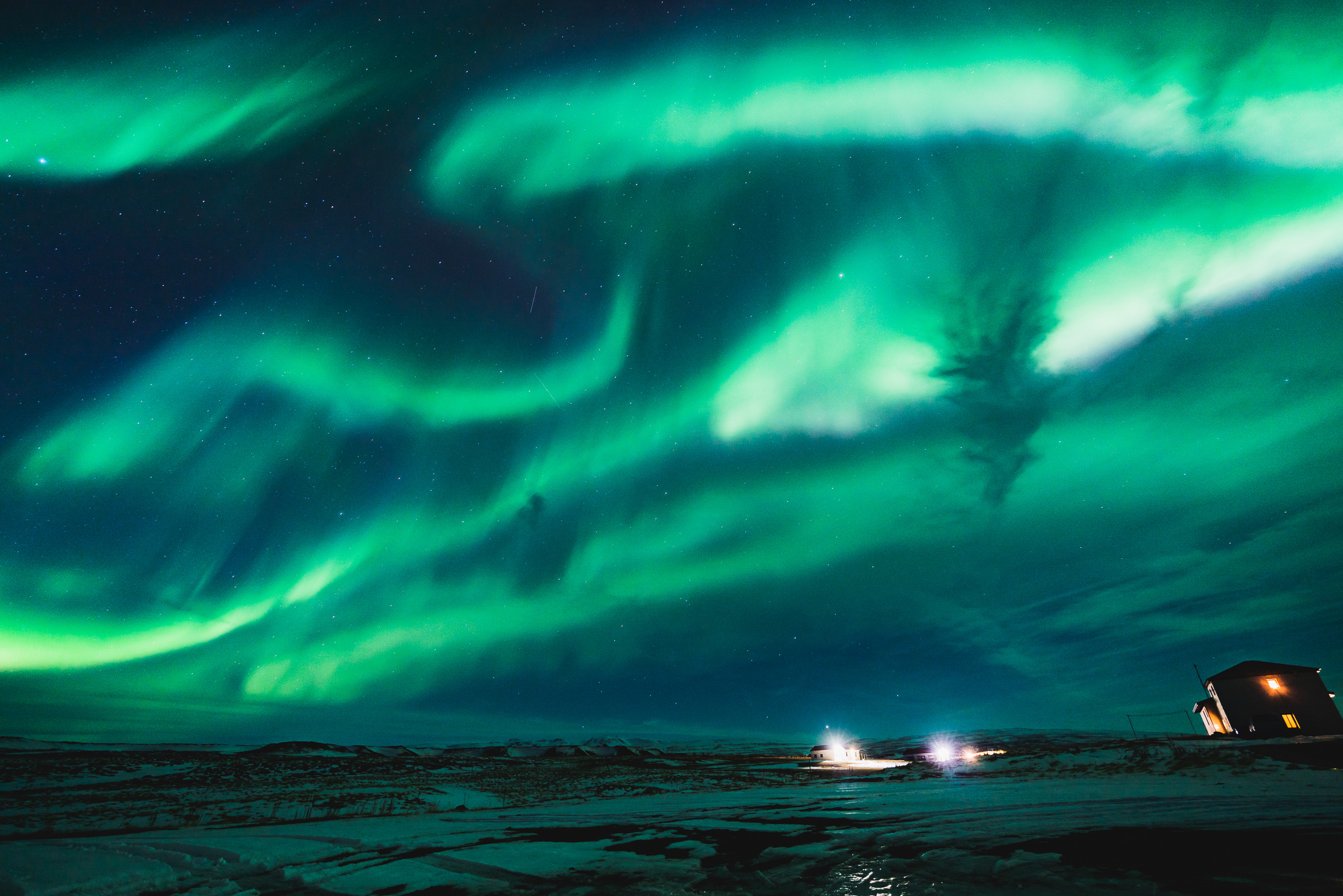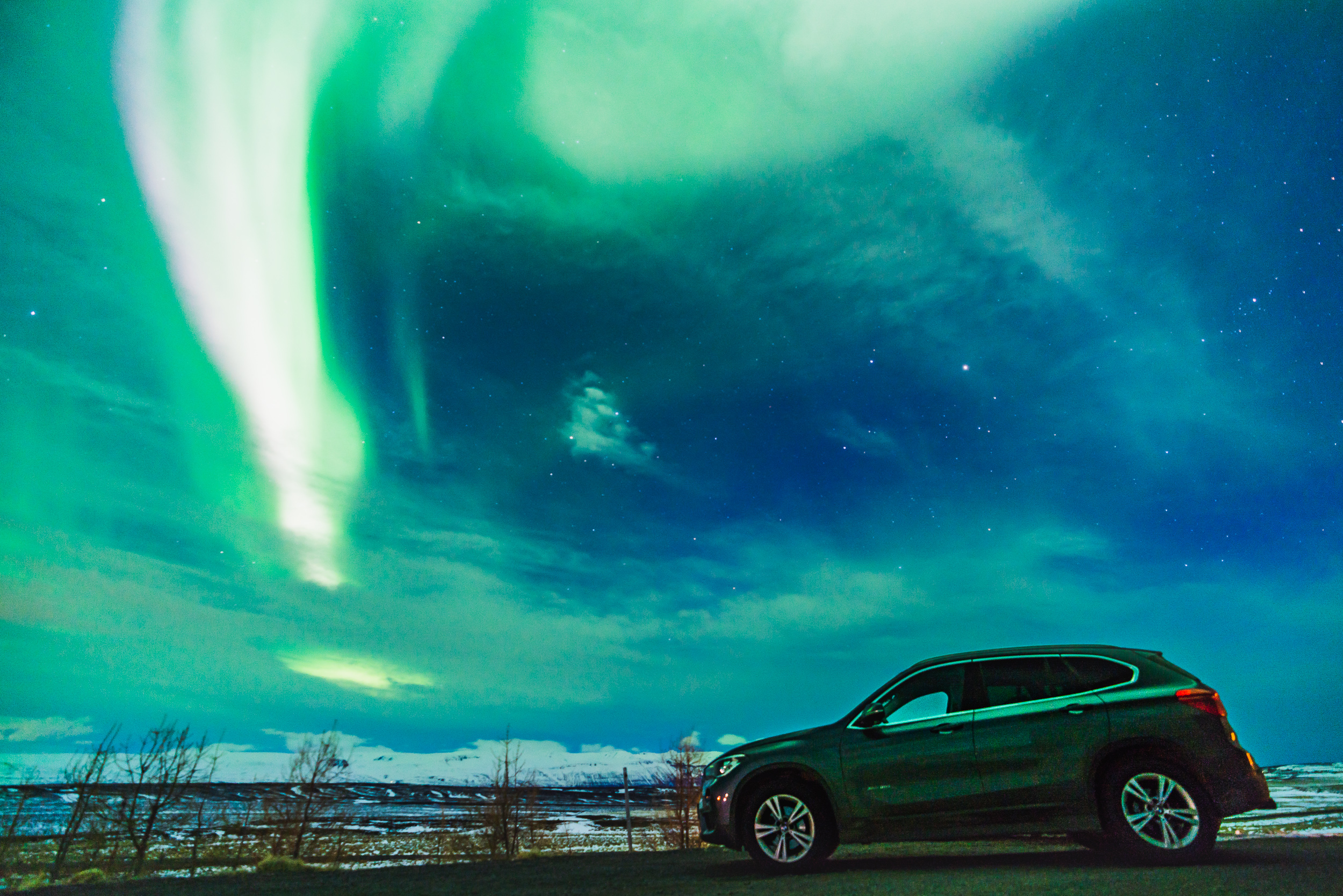April 10, 2018
akureryi \ the north
Behind the Scenes:
We went out of our way to see the Krafla crater, famous for its blue water, but we didn't think it through because it was covered in snow and there was little to see.
The Scene:
There are few places we wish we got to spend more time at in Iceland, but one of those places was the Airbnb cabin at Egilsstaðir. The surrounding area was so bright and quiet, and the cabin was so cozy and well kept, we would've loved to spend more time there relaxing and taking in the scenery. We definitely want to come back in the summertime and use the grill on the porch!
But our tight schedule demanded that we move on, and we headed north to a total change of scenery from the southern lava fields and the rainy eastern coast. The north was totally white, extremely sunny and sprinkled with desolate mountain peaks. By this point, the majority of tourists turn back toward Reykjavík which is a shame (but also a blessing for us) since the northern region has so much beautiful scenery to offer.
For example, Goðafoss, the waterfall of the gods, was our favorite waterfall by far. It was massive like Gullfoss, but had its own personality. The water was a mixture of dark blue, light blue, and green. You can walk up to smaller tributary falls and watch the crystal clear water race over the side. Massive icicles hung down from the lip of the falls like teeth, making Goðafoss look especially fierce.
We then sped off to Akureyri, the capital of the north, trying to make it to the Icelandic Motorcycle Museum before its 5PM closing time. We rolled in around 4PM, but the museum was closed. In the off season you have to call ahead to make an appointment to tour the showrooms (Google chooses to show you the summer operating hours). It was disappointing, but gave us extra time to explore the city which was absolutely charming.
Colorful quirky buildings, winding streets and a large harbor define Akureyri. It was about 50°F (warmer than Boston!) so we grabbed some dinner and strolled around the main streets. We stopped in a coffee shop/bookstore for a latte, picked up some postcards to mail home and admired the Icelandic books (its actually rare not to see English in Iceland).
Our Airbnb for the night was a little further north. It was a very modern cabin (much different from our traditional cabin the night before) but was clean and comfortable with a view that overlooked a beautiful mountain. We pulled our table up to the window and edited pictures while watching the sunset. The elephant in the room was how clear the day had been, and if it would stay that way into the night. If it did, there was a pretty good chance we'd get to see the northern lights. We kept an eye on the sky and waited for nightfall.
It remained pretty clear, but a northern lights app we downloaded continue to squash our hopes giving our location only a 30% chance of seeing the lights. Around 11:30PM, we decided to go out anyway and get star pictures at the very least. It was brutally cold and viciously windy, but the stars were beautiful. Across the sky were faint white misty streaks, too low and bright to be clouds. We set up the tripod, set the exposure, clicked, and waited about 10 seconds. Our late night efforts were rewarded: the white to our eyes was a stunning green in the camera's.
We were incredibly lucky to capture the lights on camera, but our luck continued. Just as we were packing up near the car, the sky brightened, and the streaks seemed to come alive and dance. The white turned to green, pink and blue. We hurriedly set everything back up and captured even more amazing shots. The lights are almost impossible to describe since they're nothing like we'd ever seen before. It was like a cathedral ceiling of stars with celestial lights moving in front of them, almost close enough to touch.
We didn't get to sleep until about 2AM, but it didn't matter. We saw what we came to Iceland only hoping to see, and it was the best moment of the trip.
Footnotes:
-The Northern Lights are most active in Iceland from September - April though you can catch a glimpse any time of year.
-If you can see stars, go and look for the lights! We used the Aurora Forecast app, which told us we only had a 30% chance of seeing them, but we did.
-If you're travelling in the off-season, check to make sure the museums and attractions you want to see are actually open.
